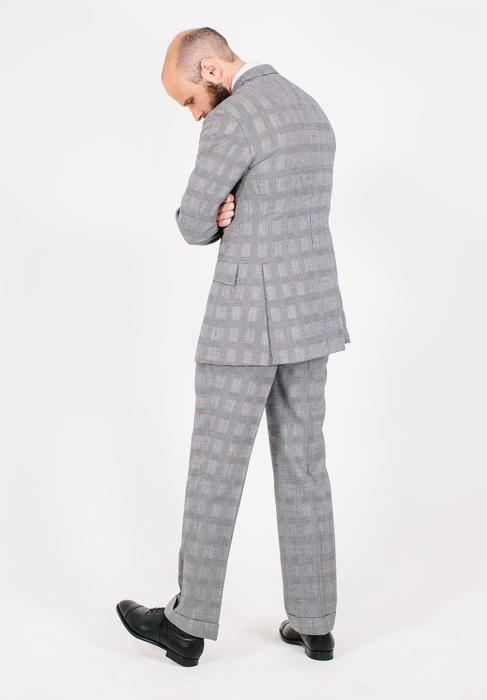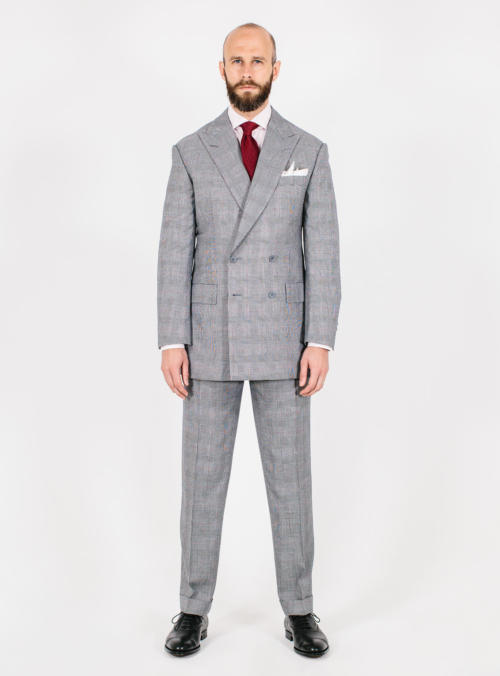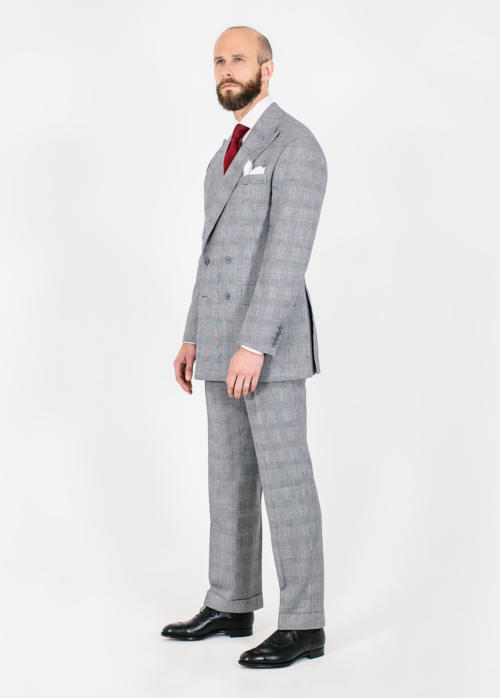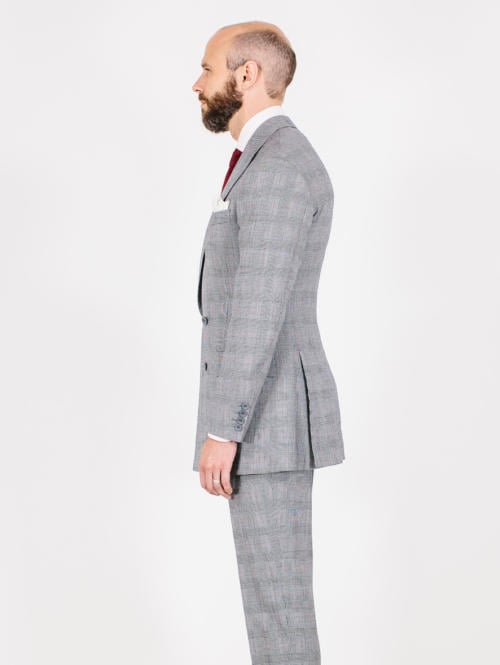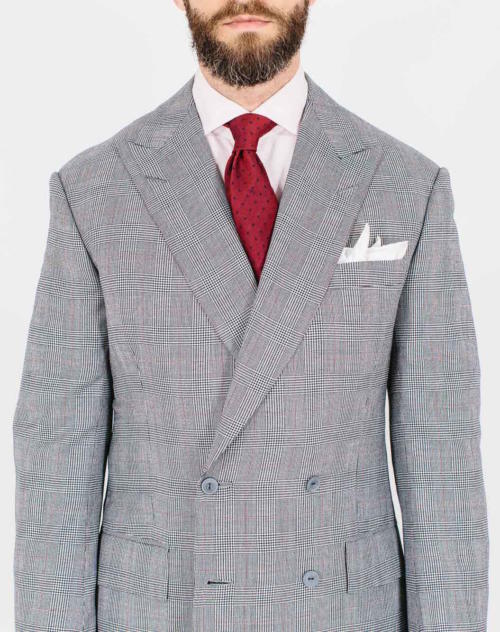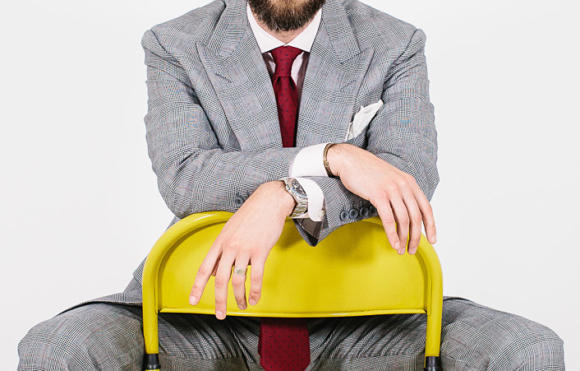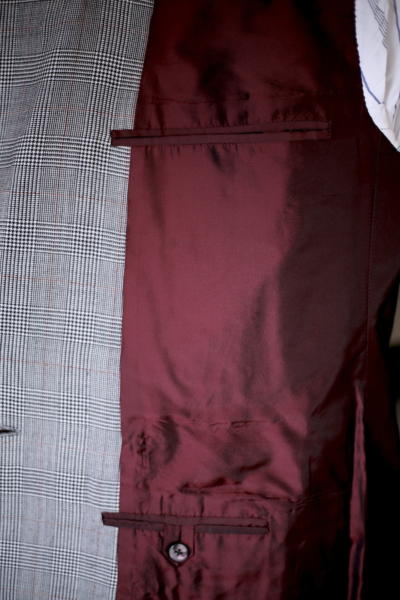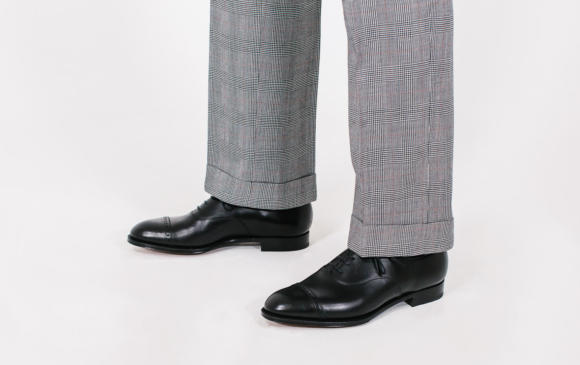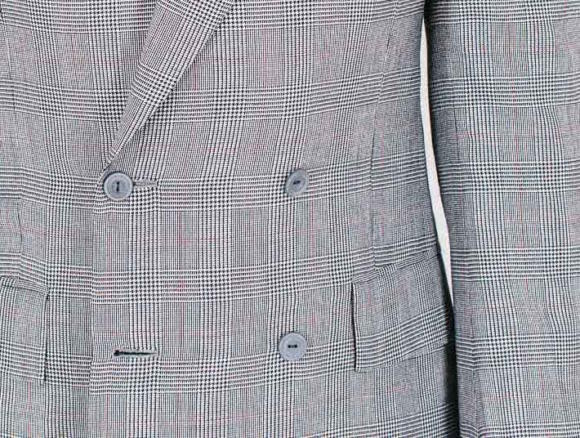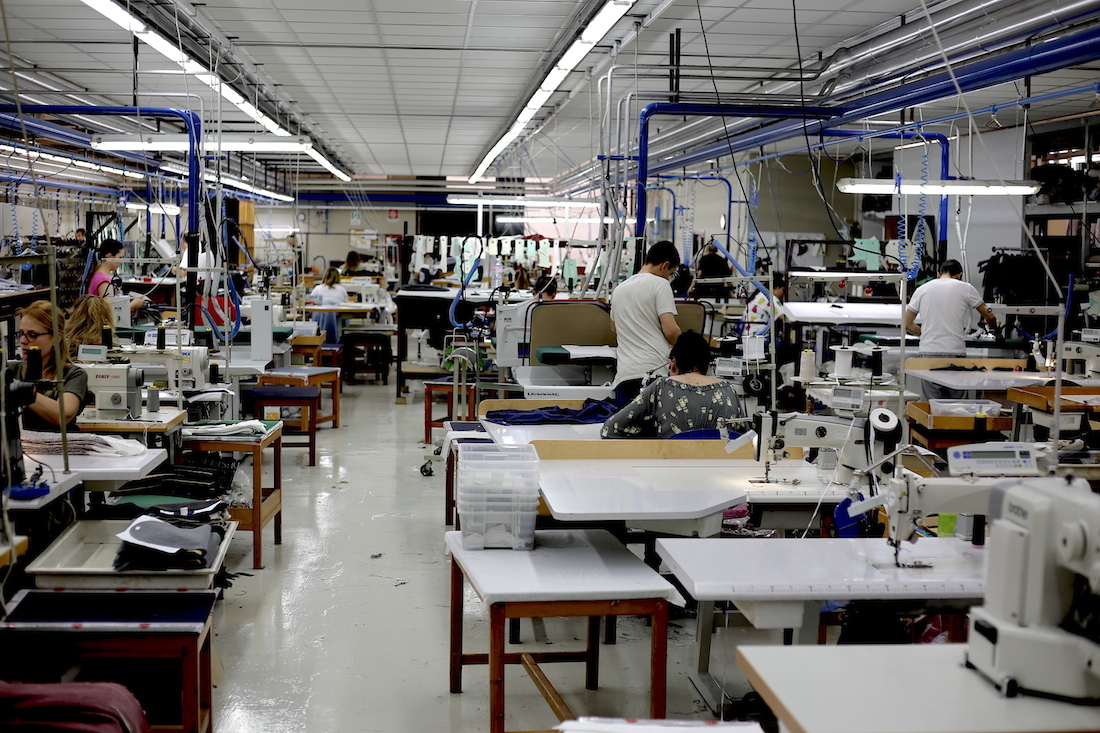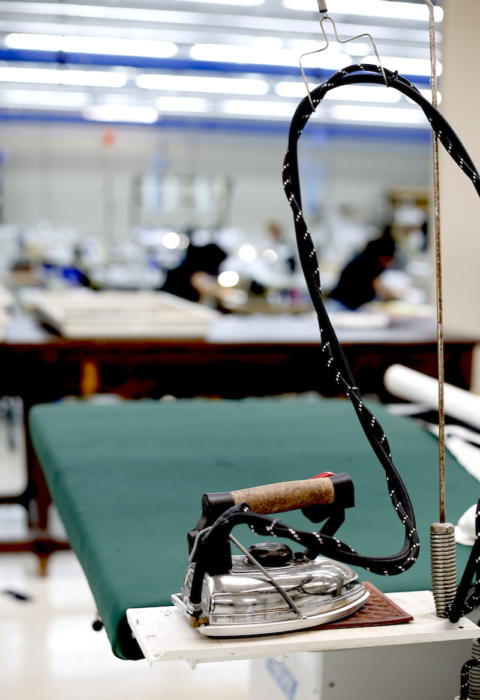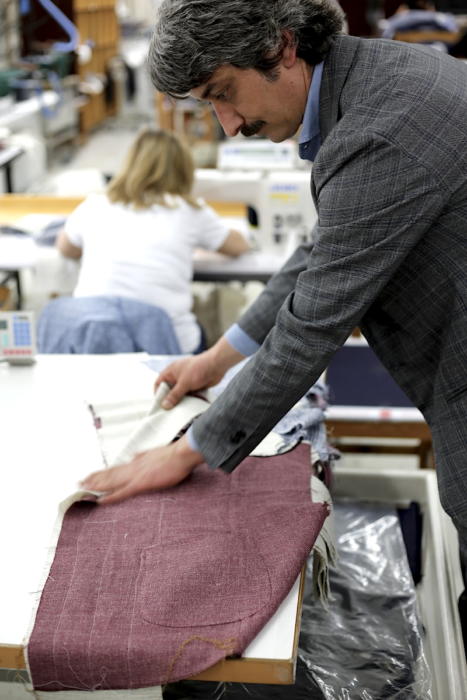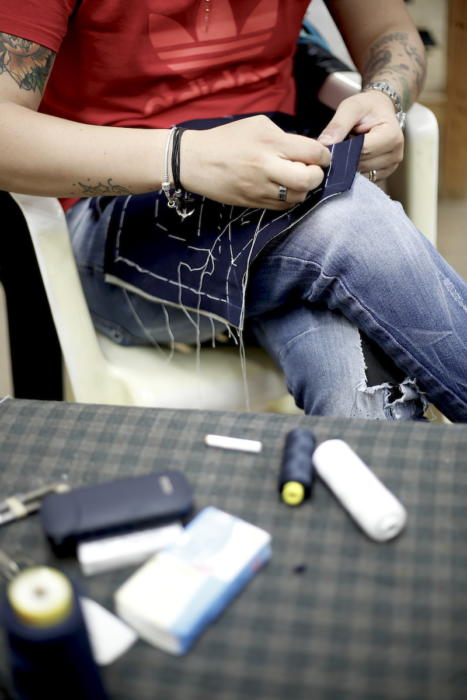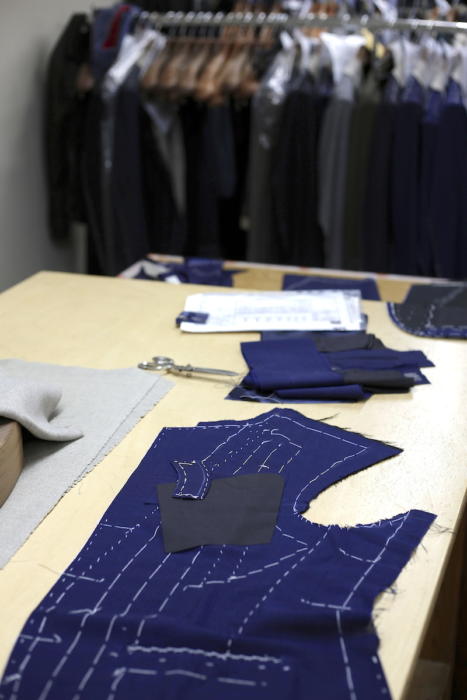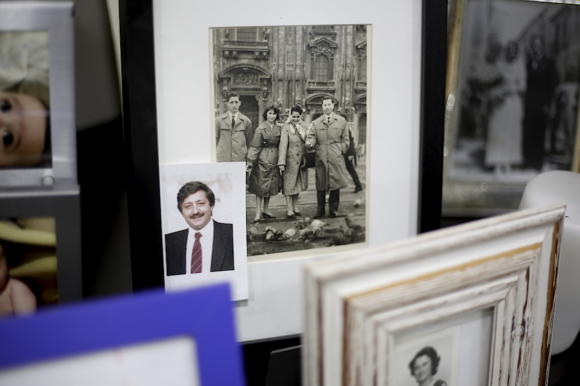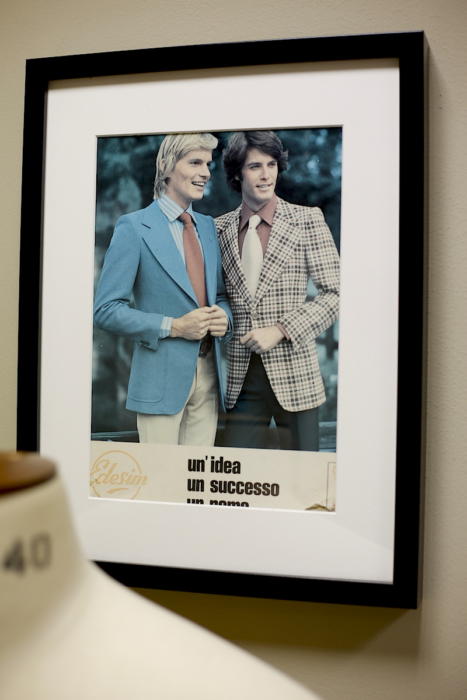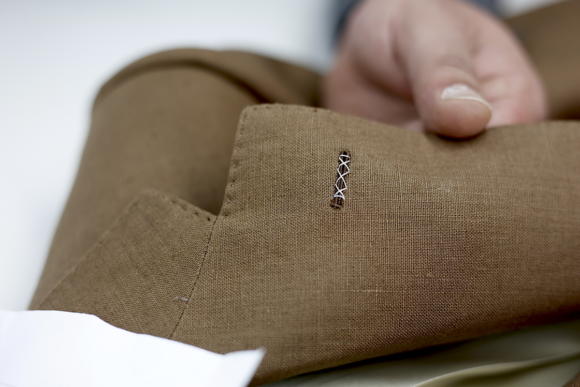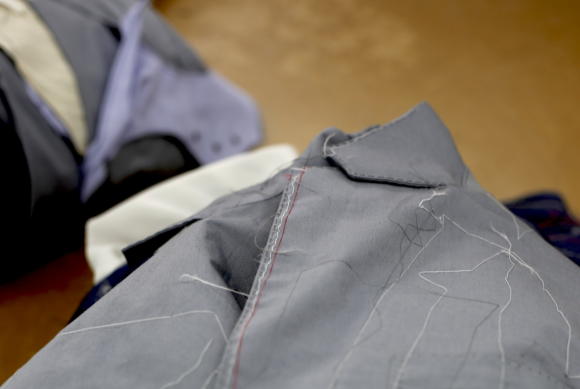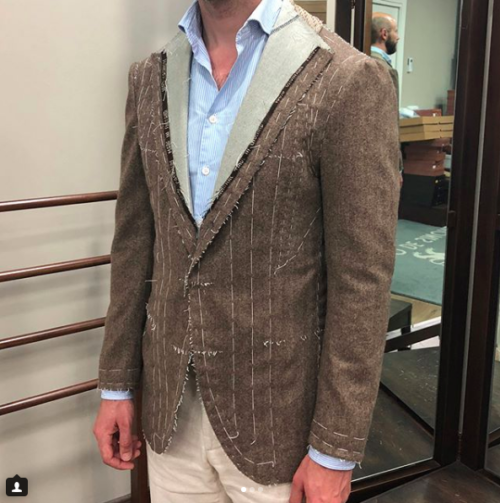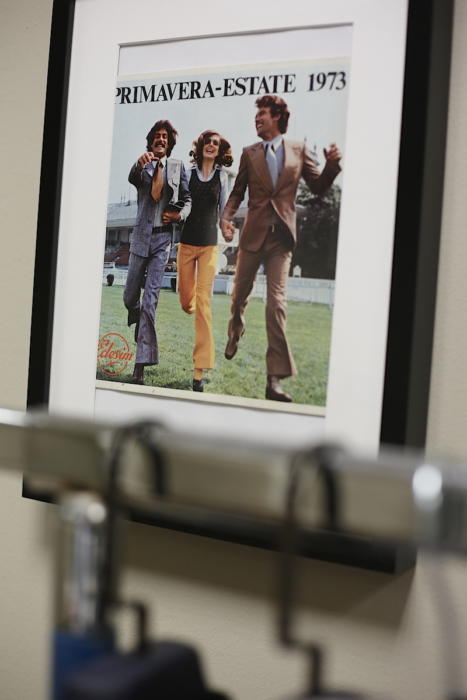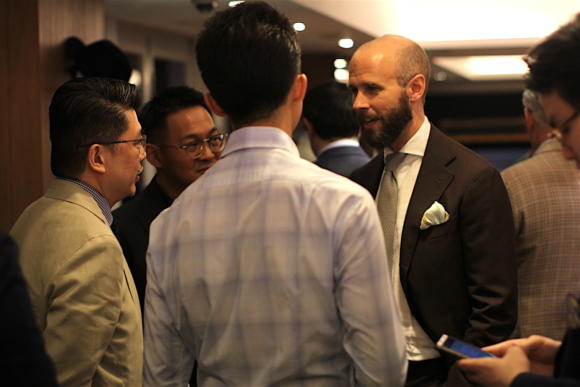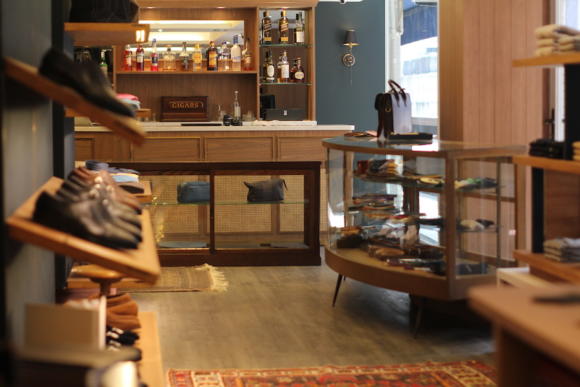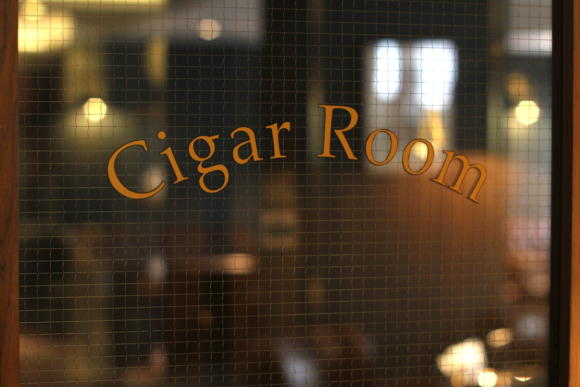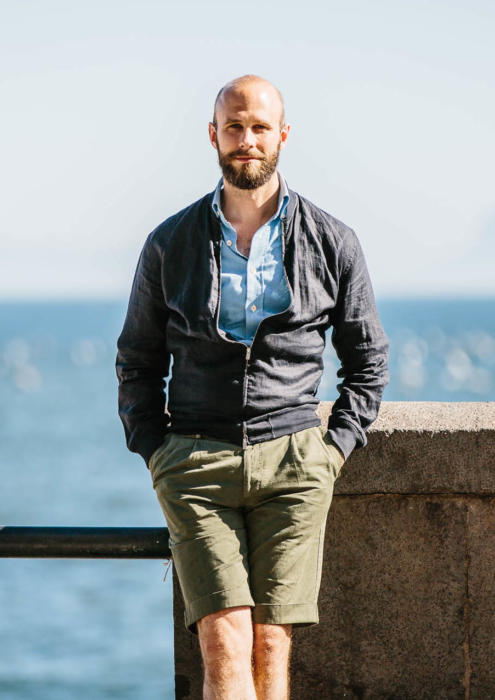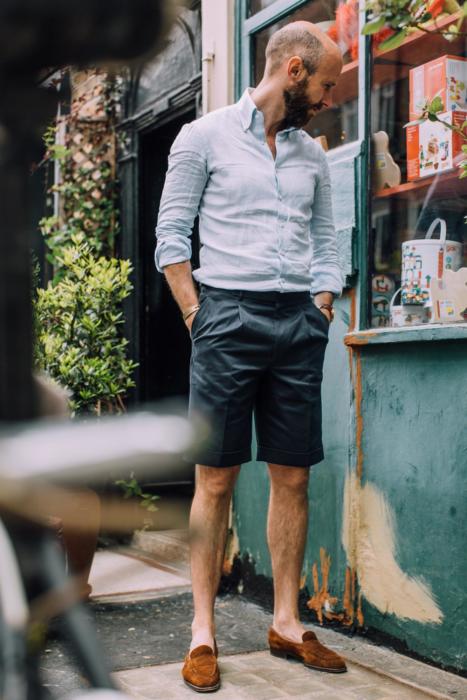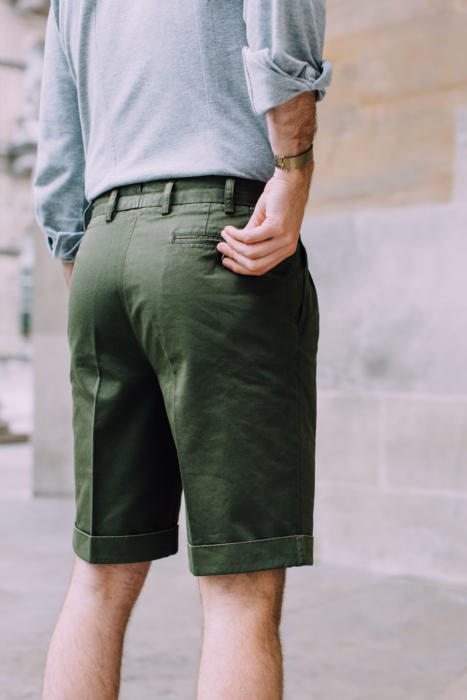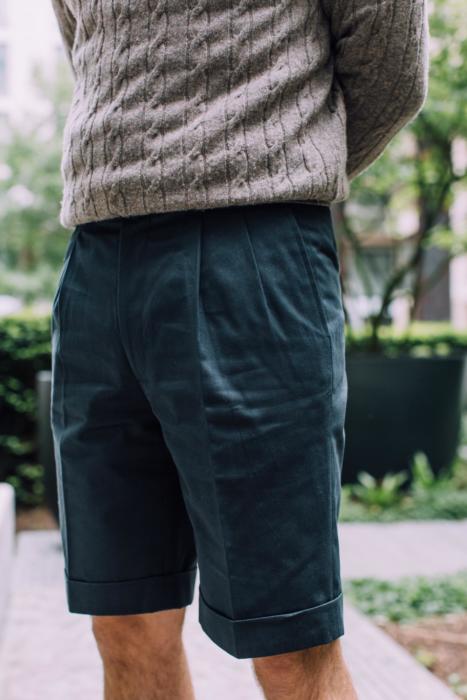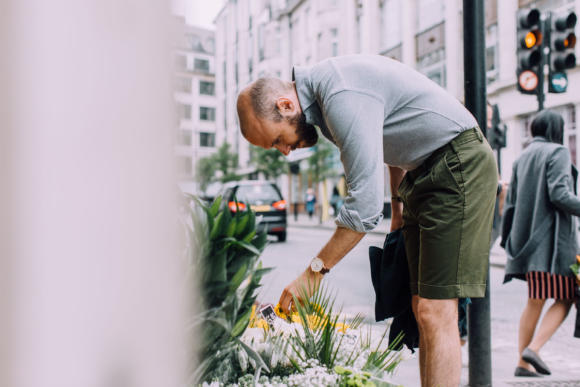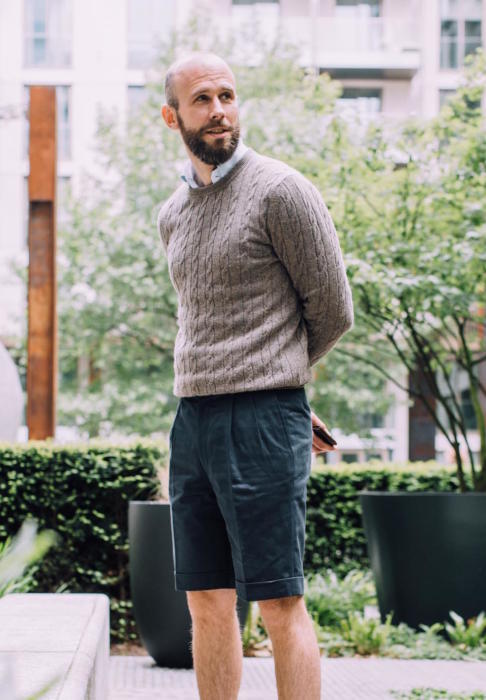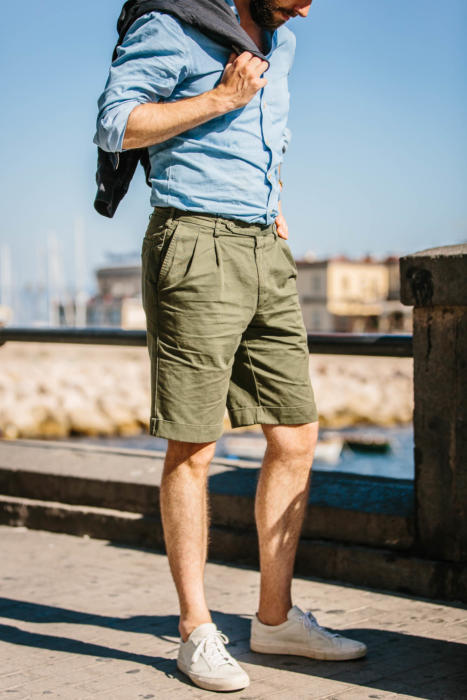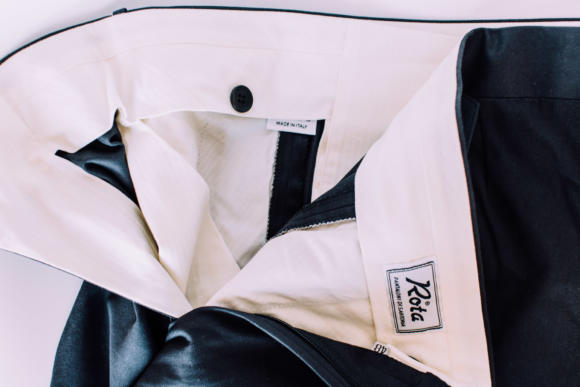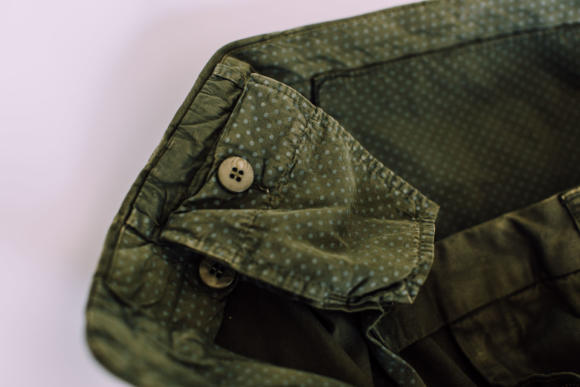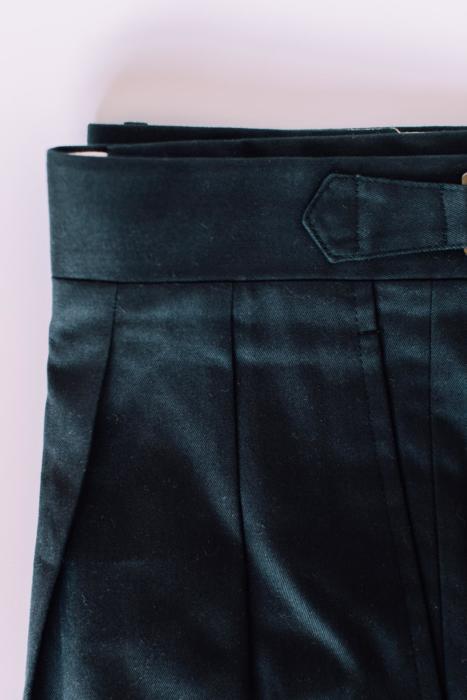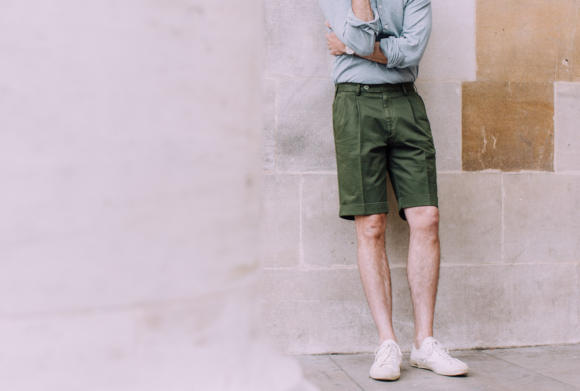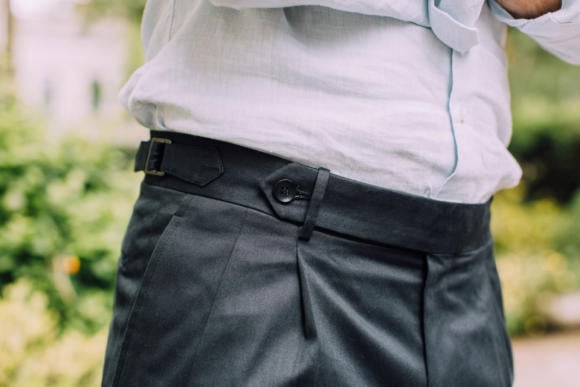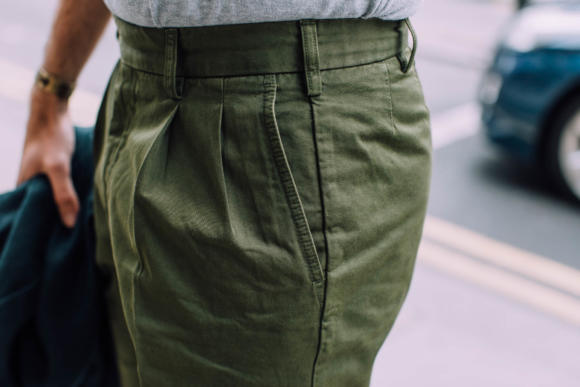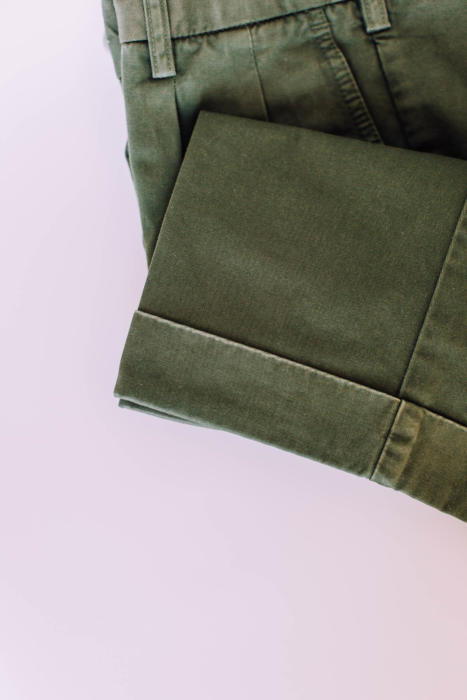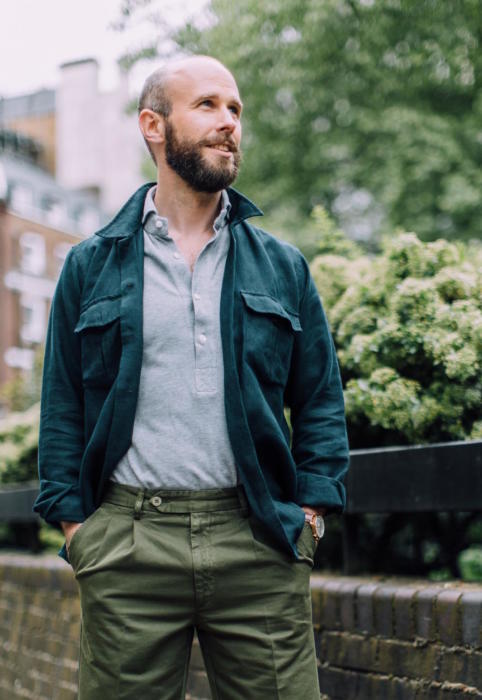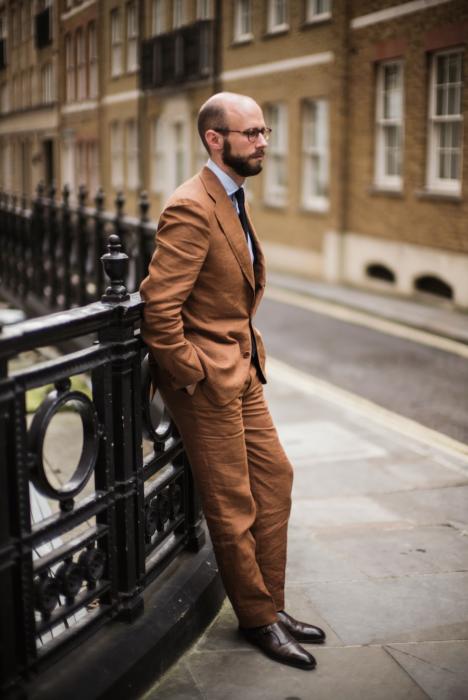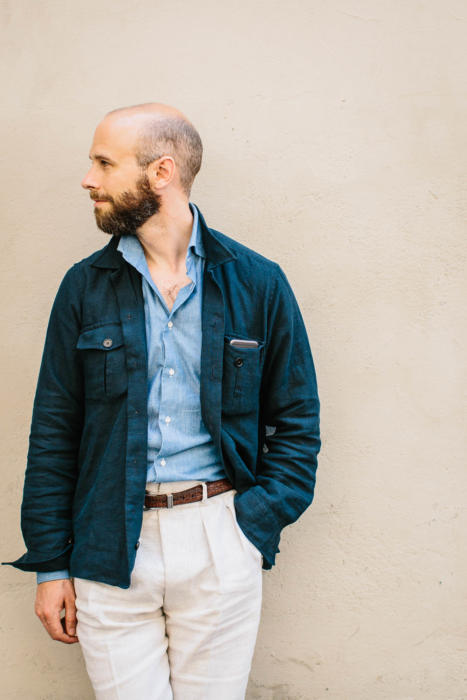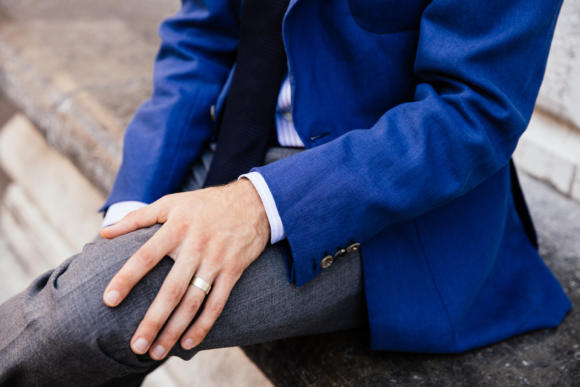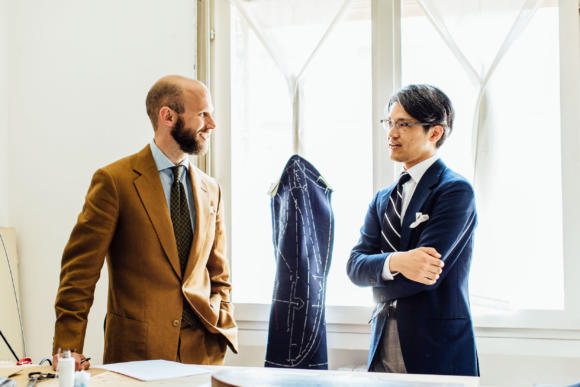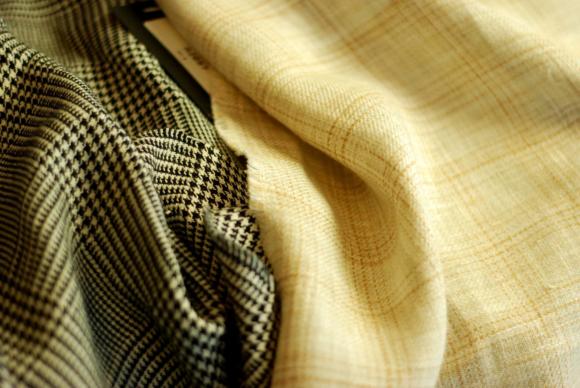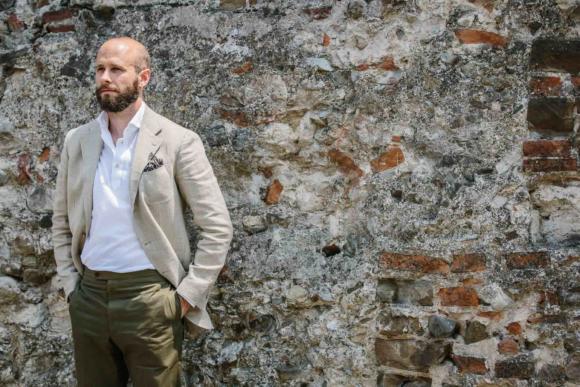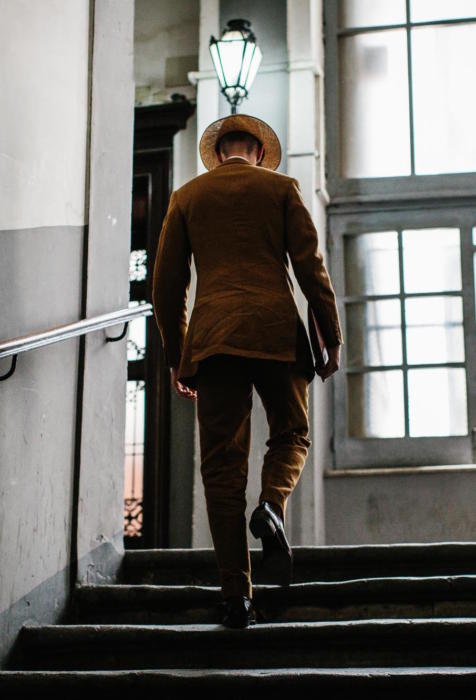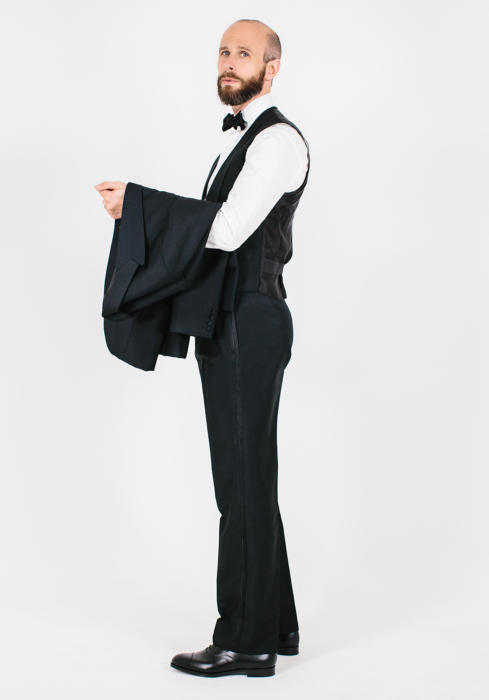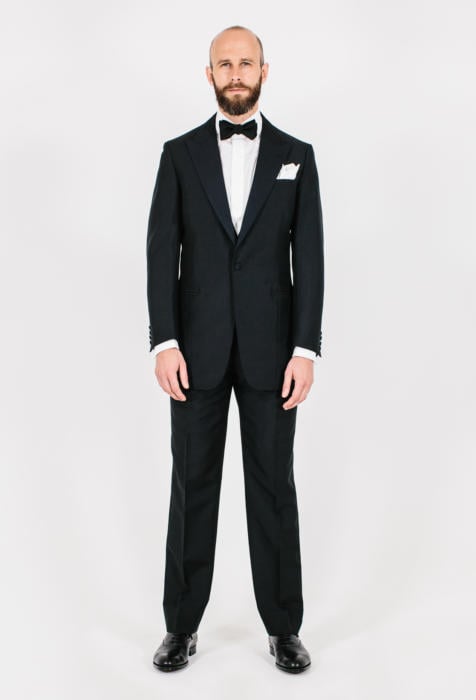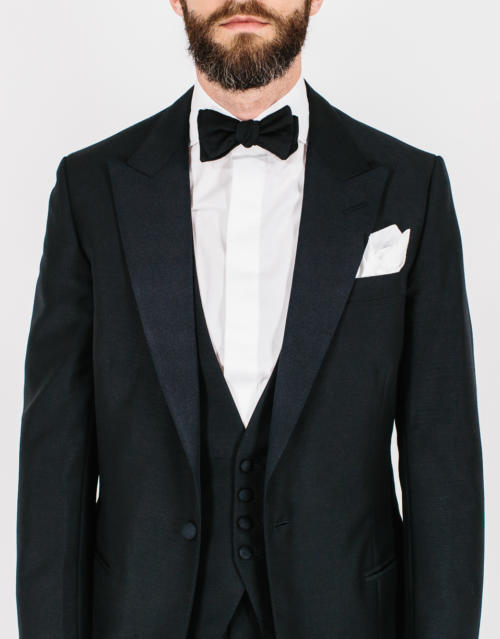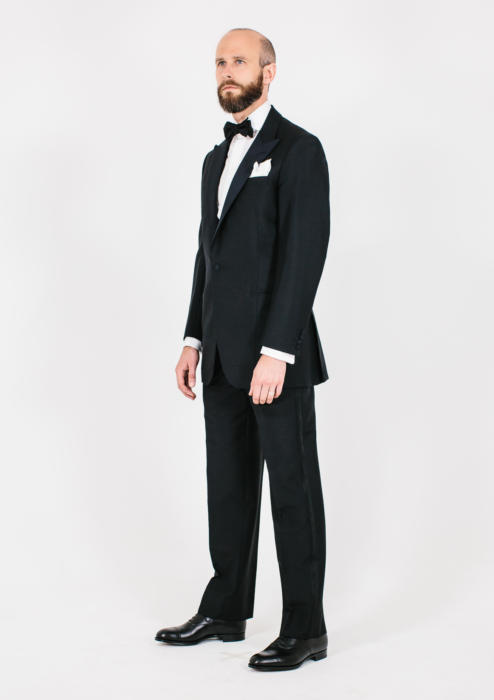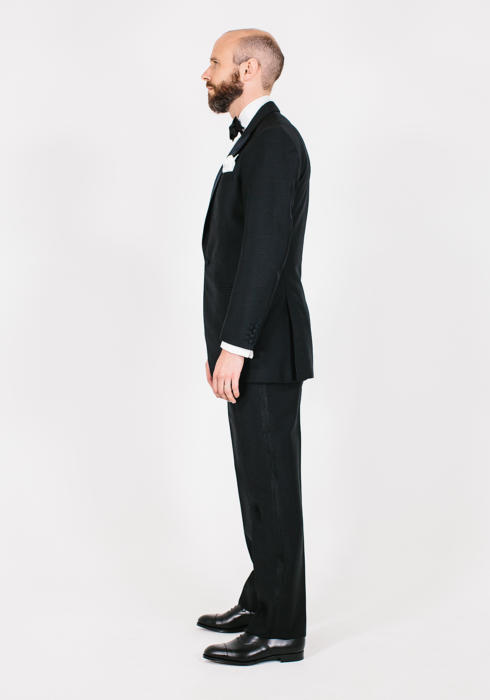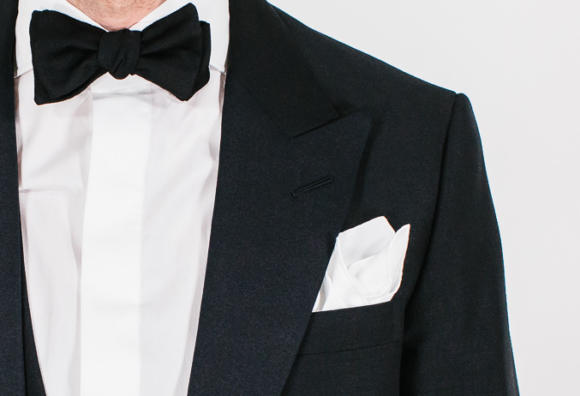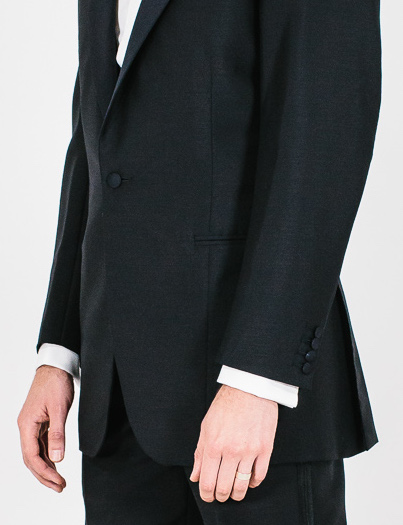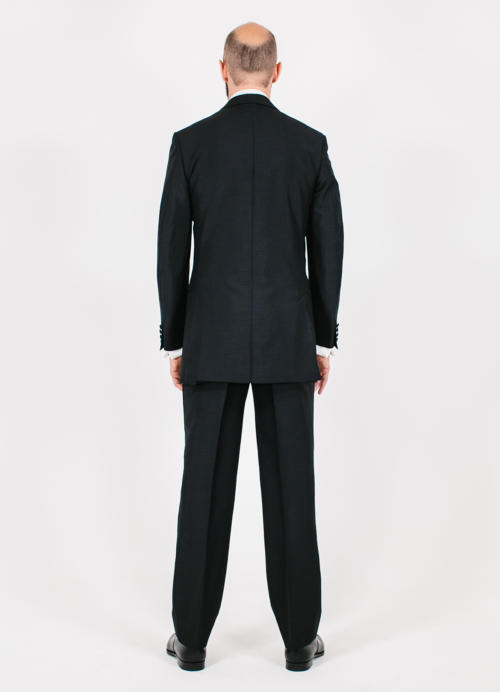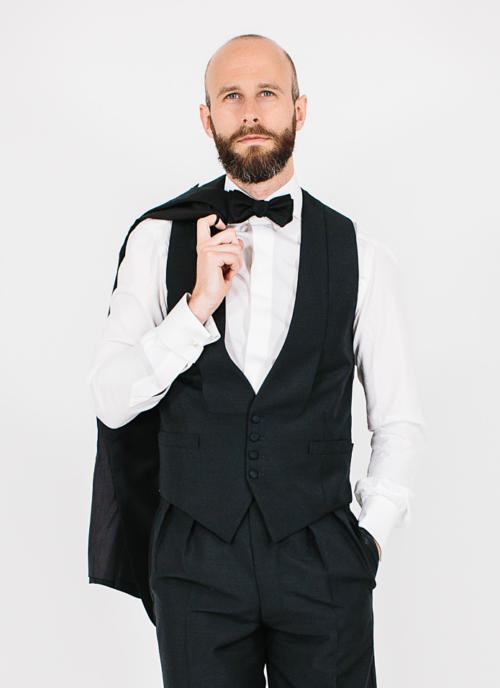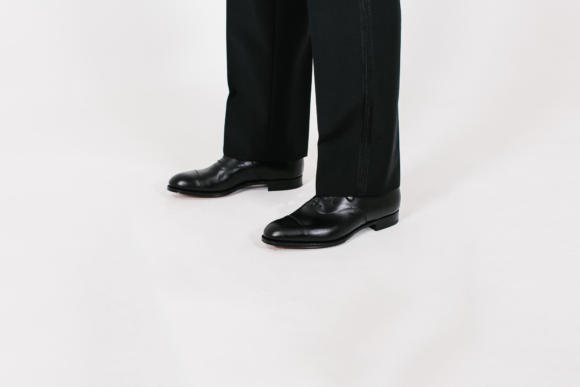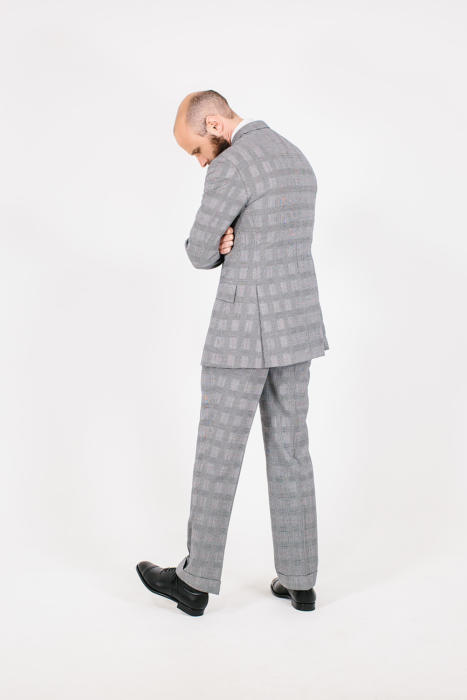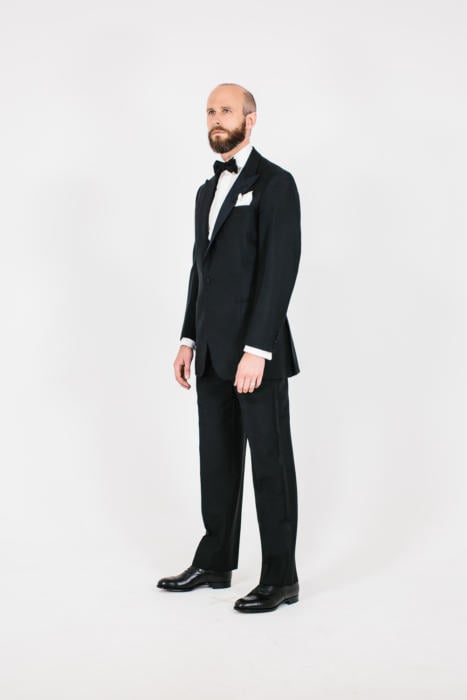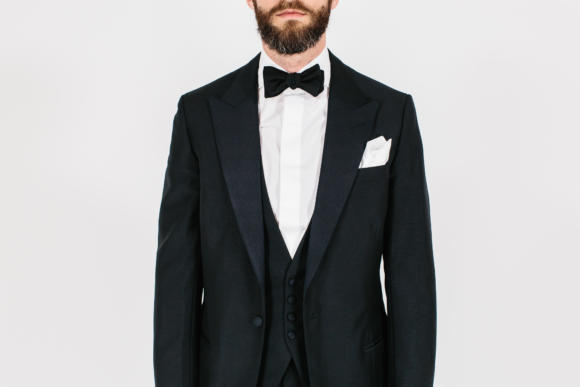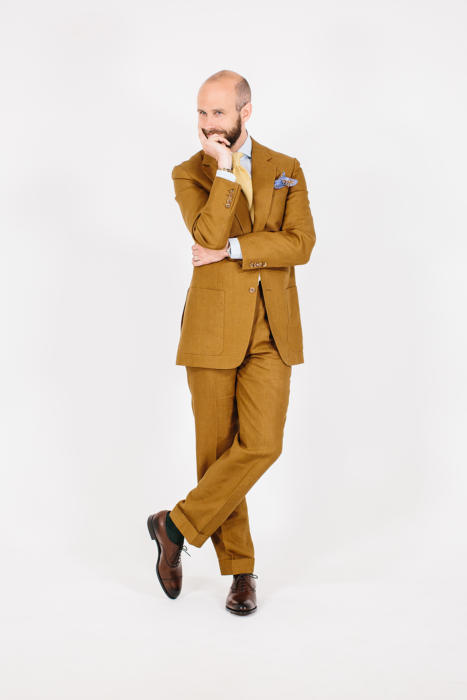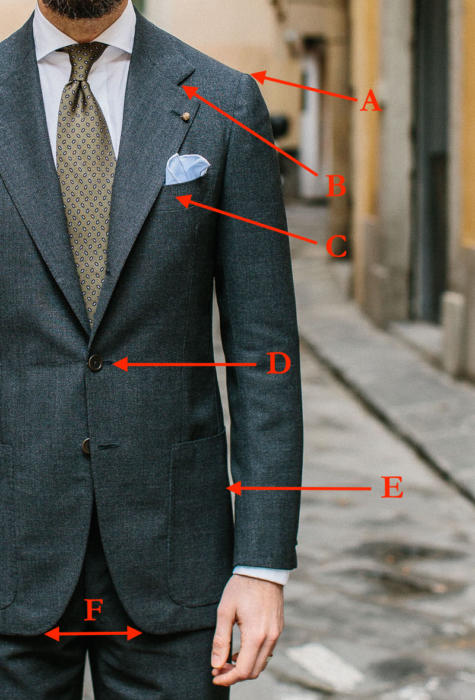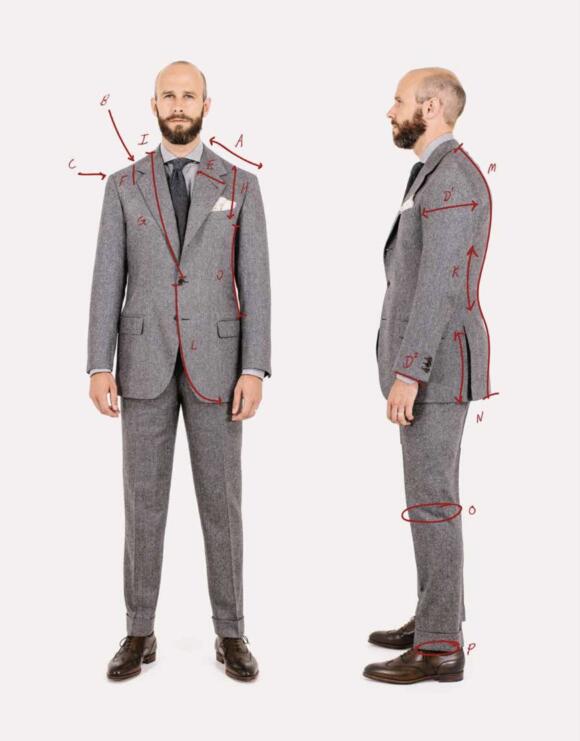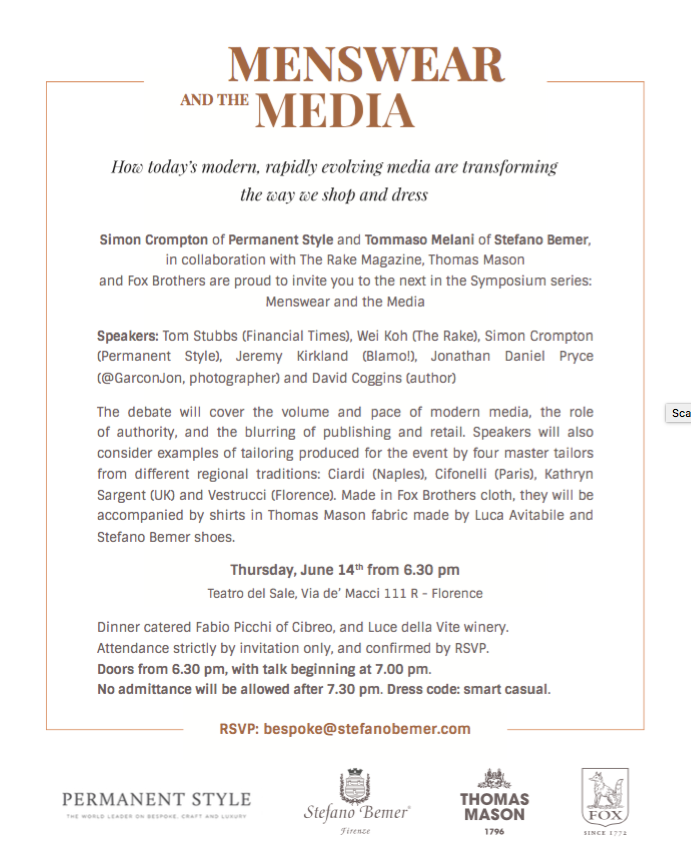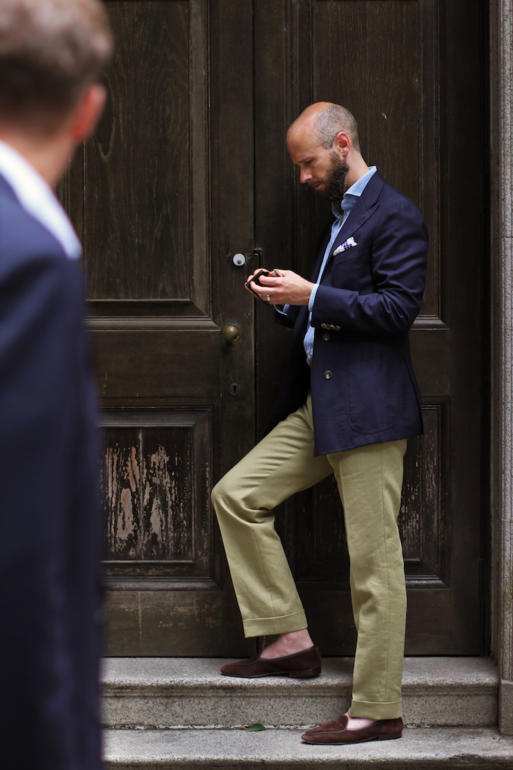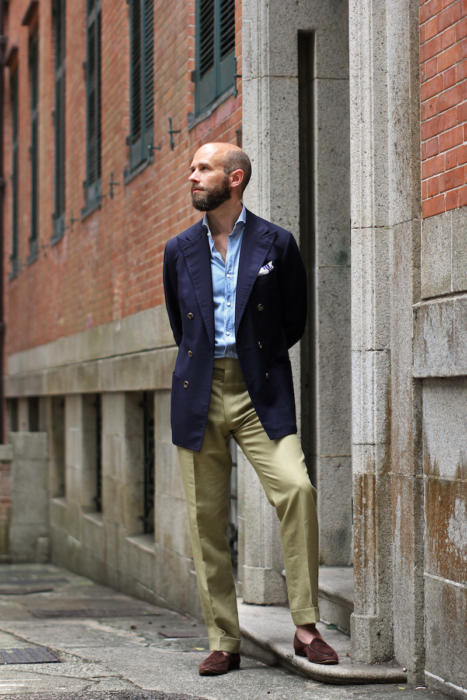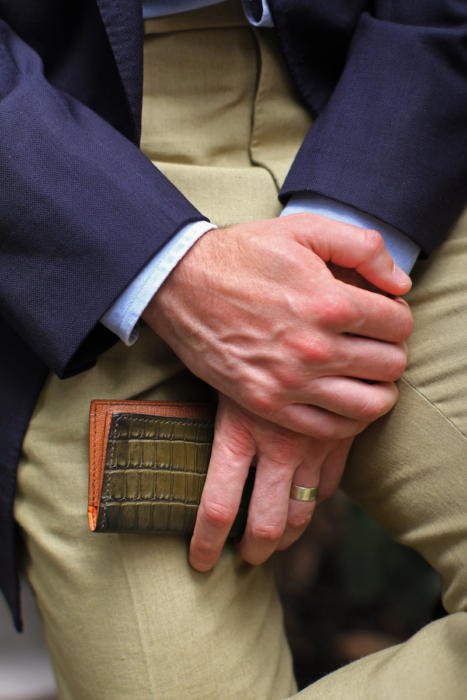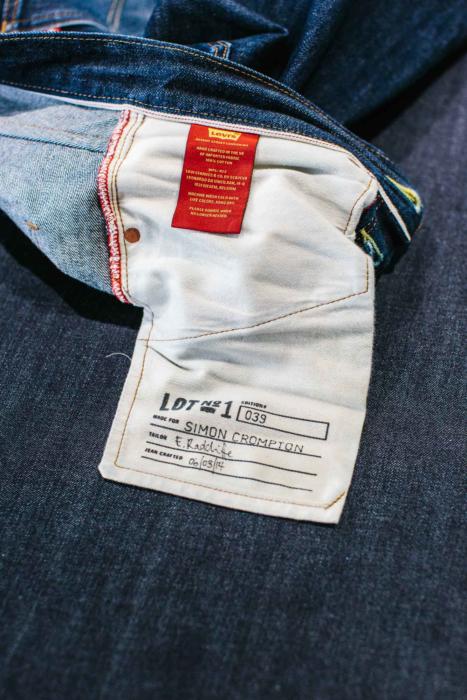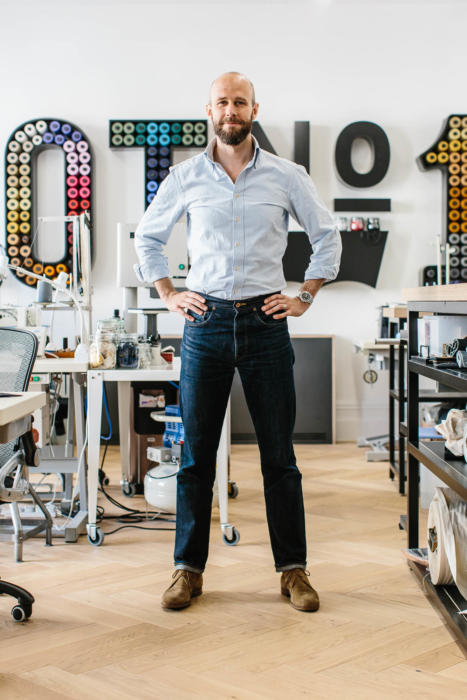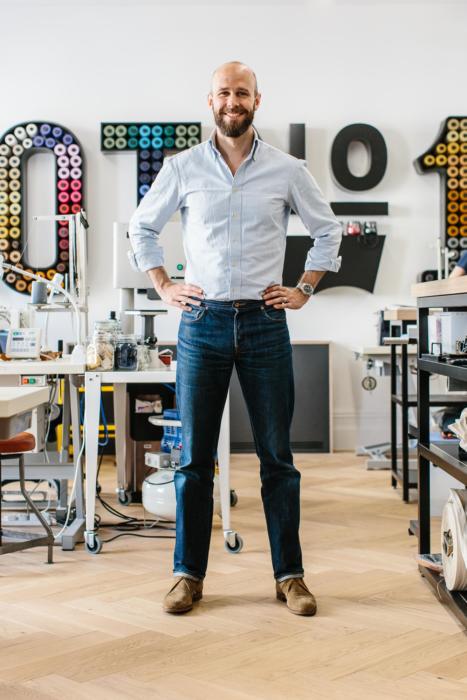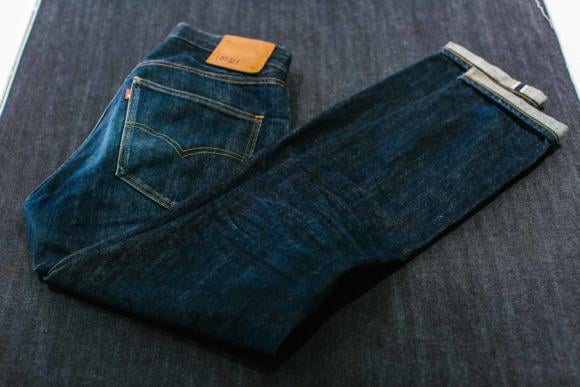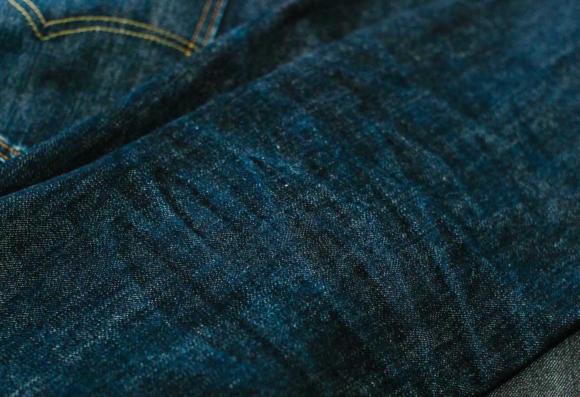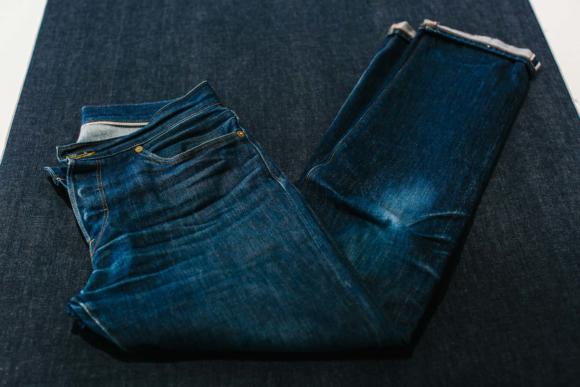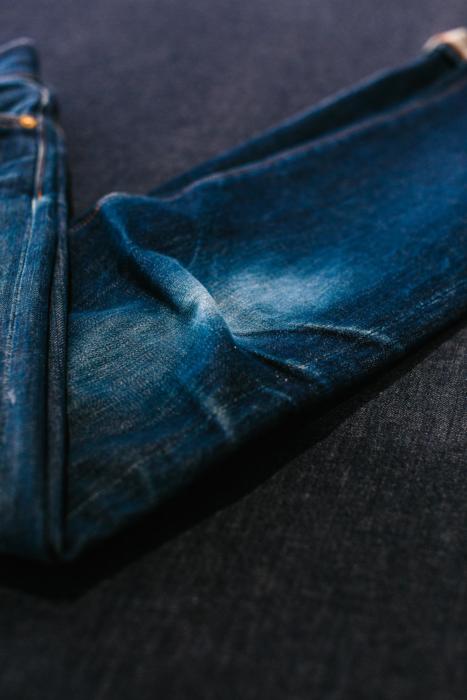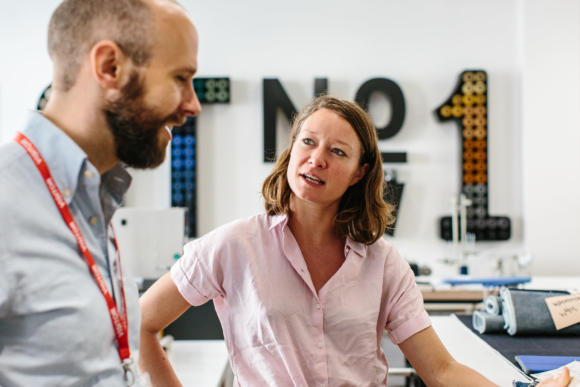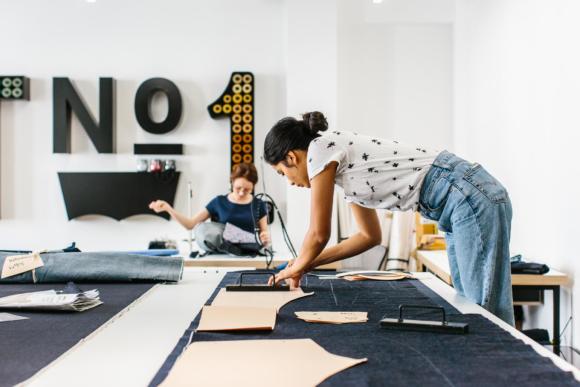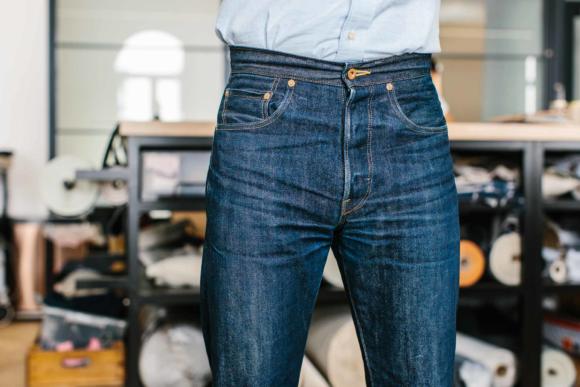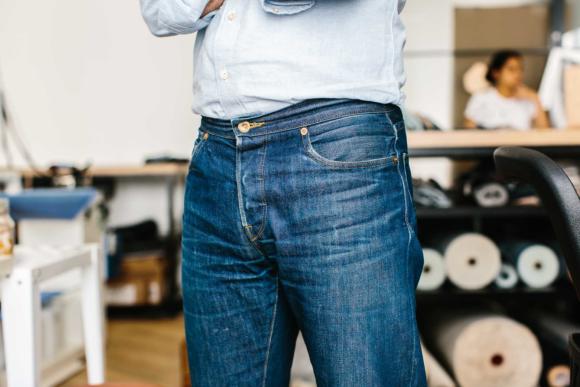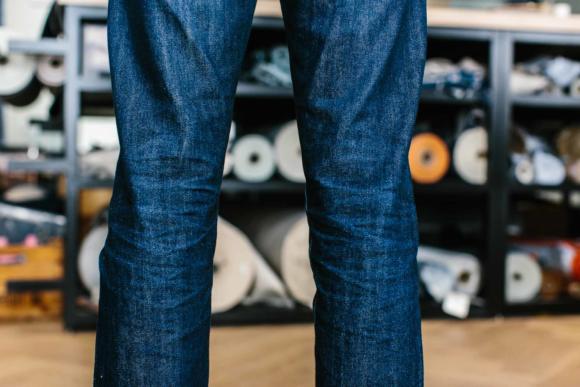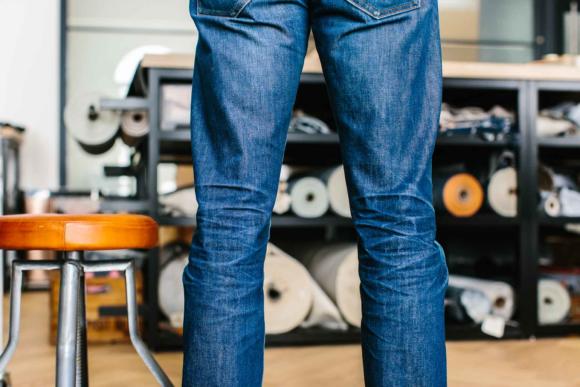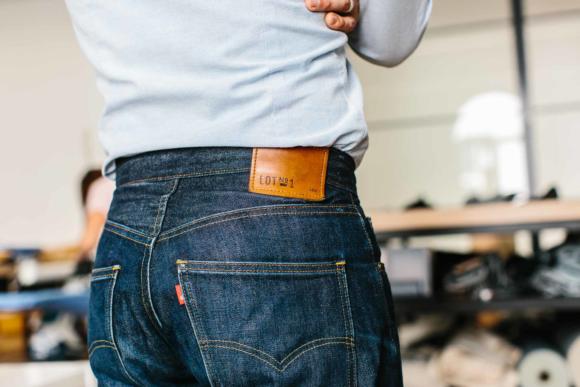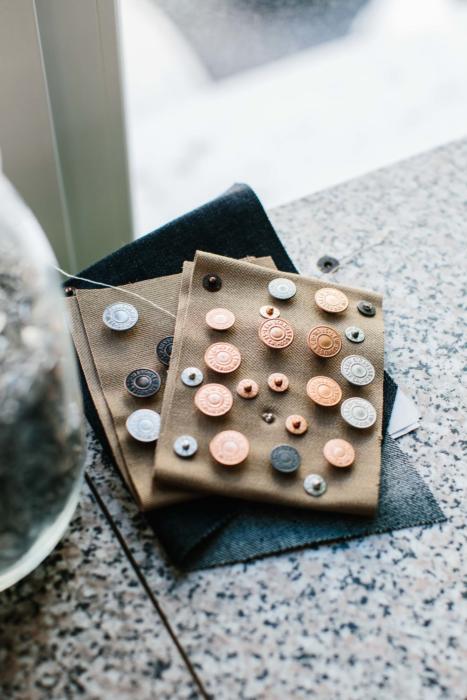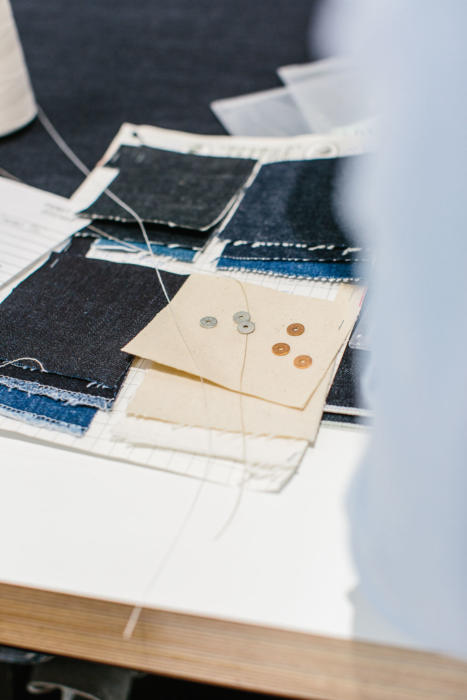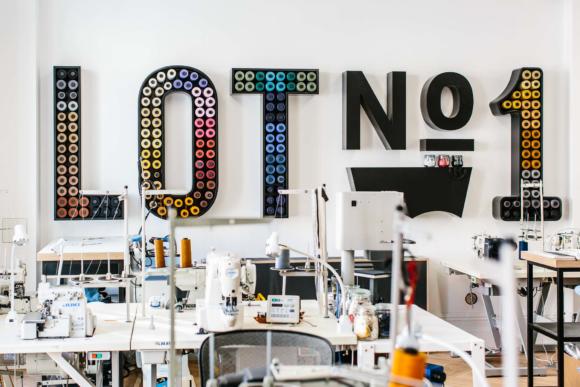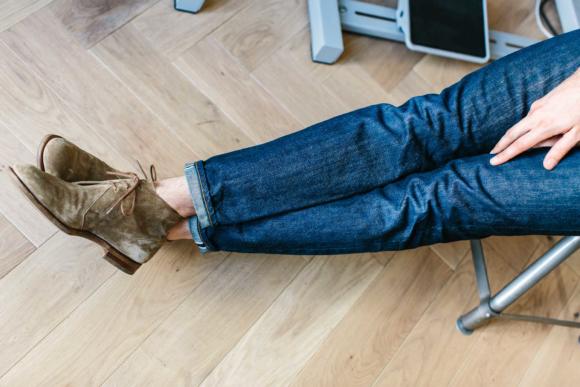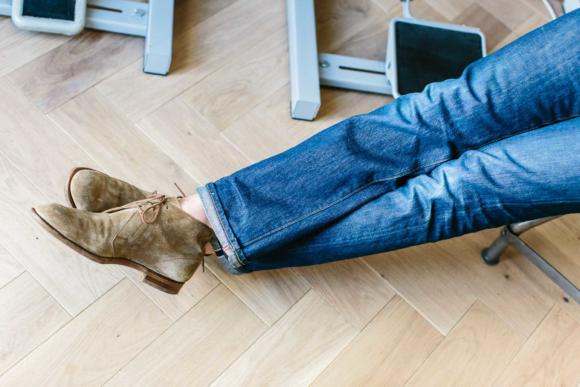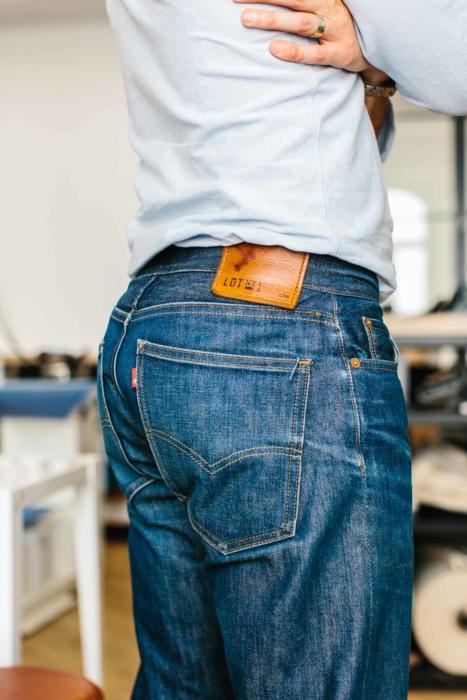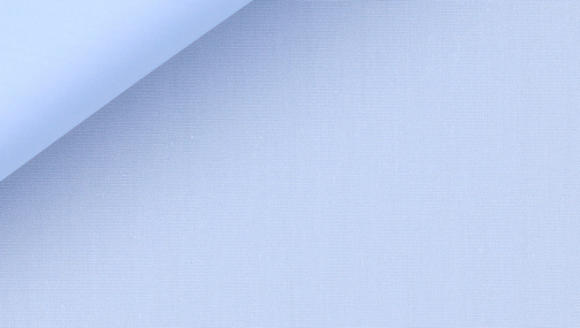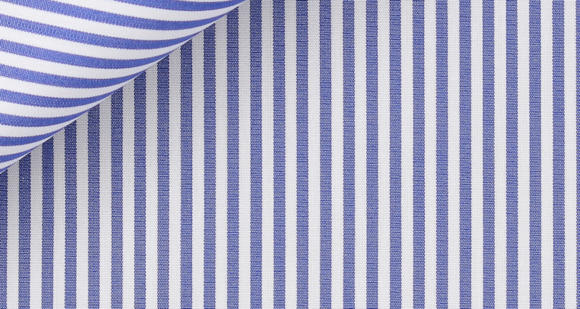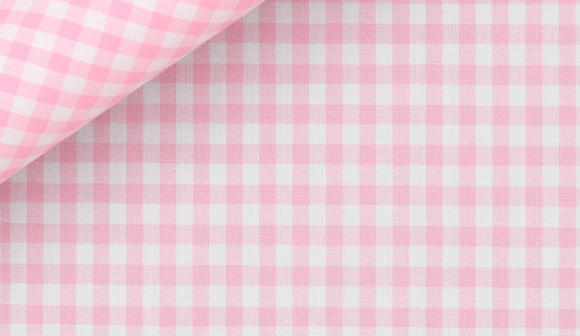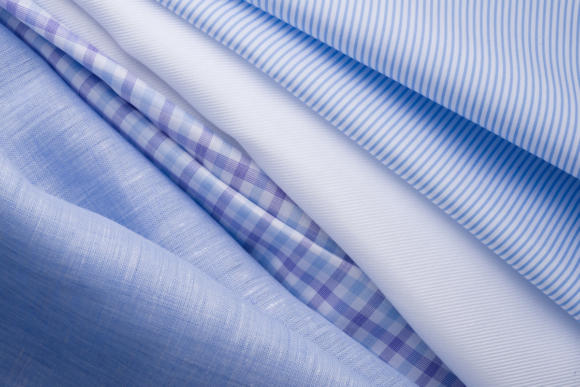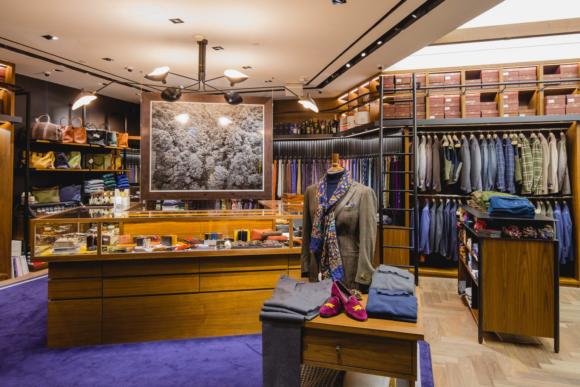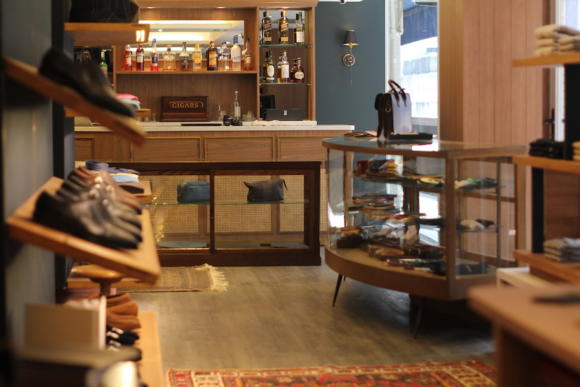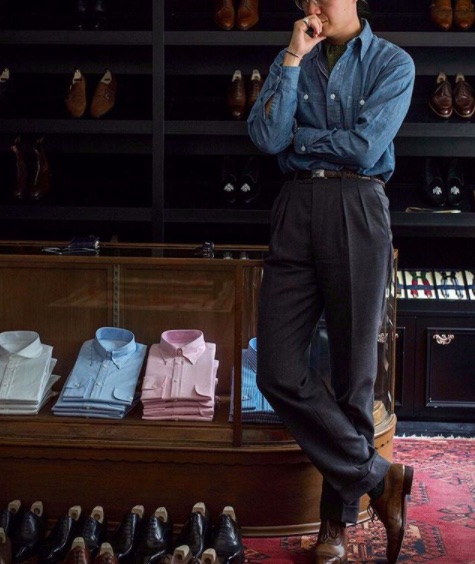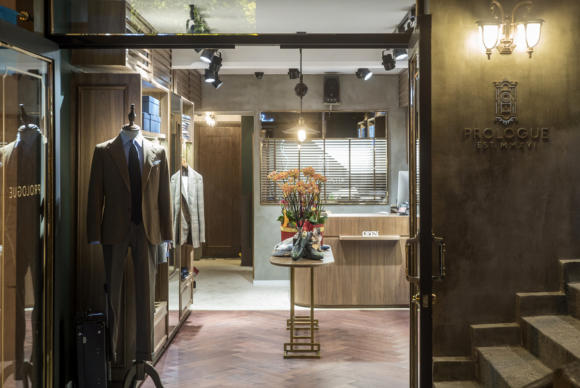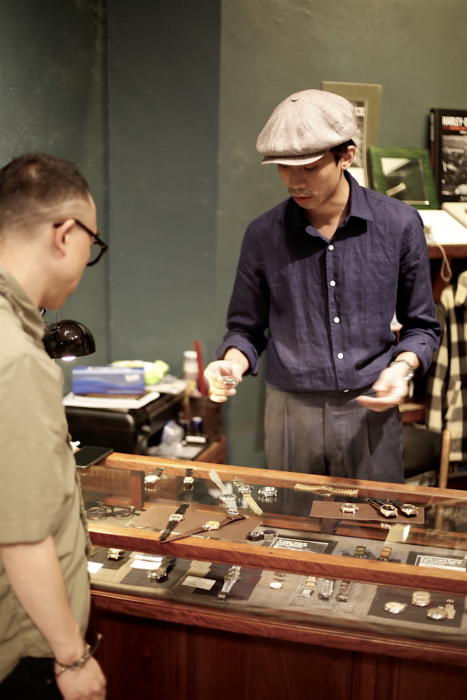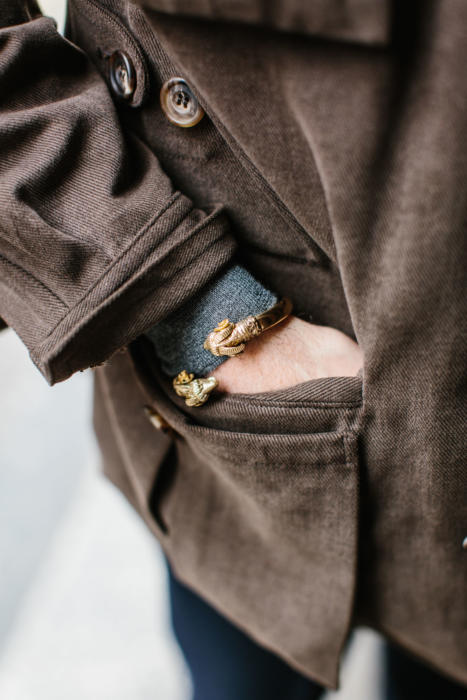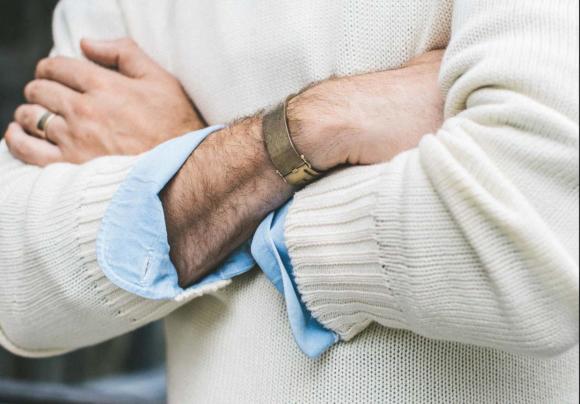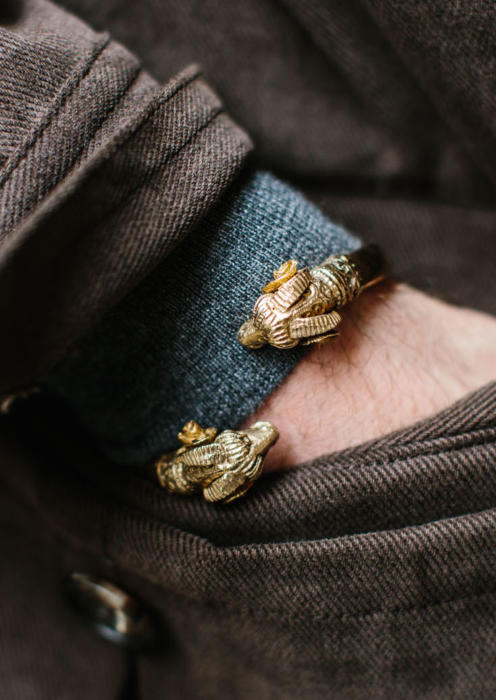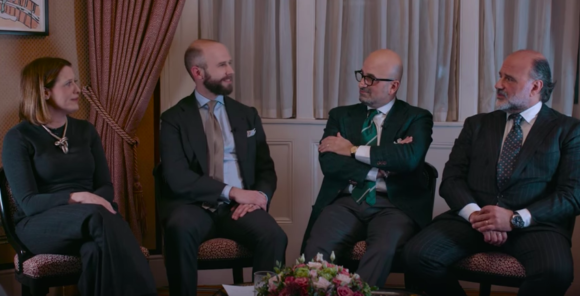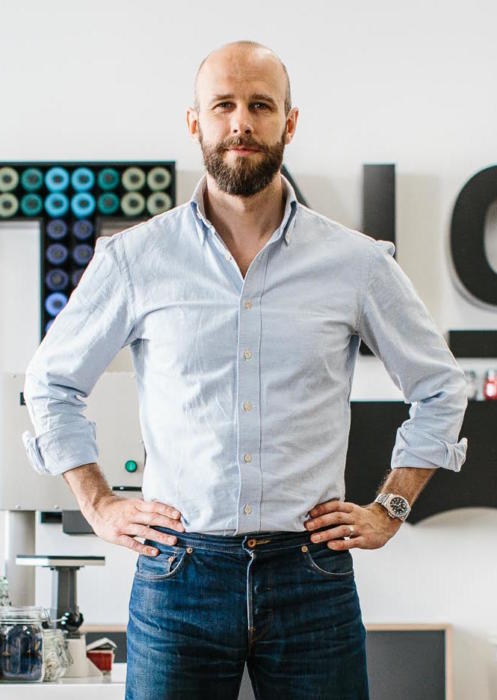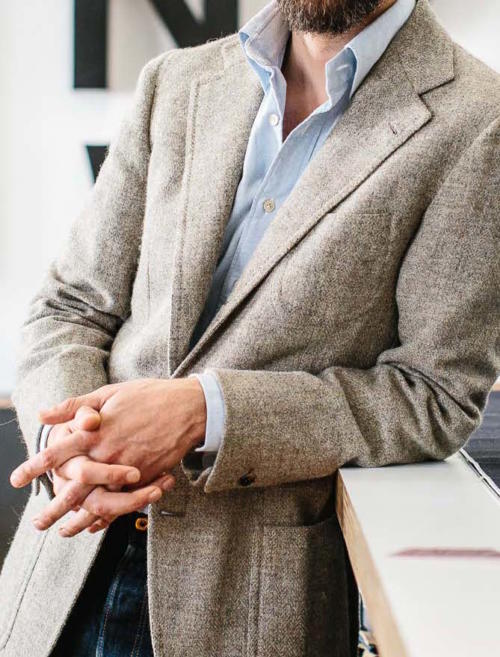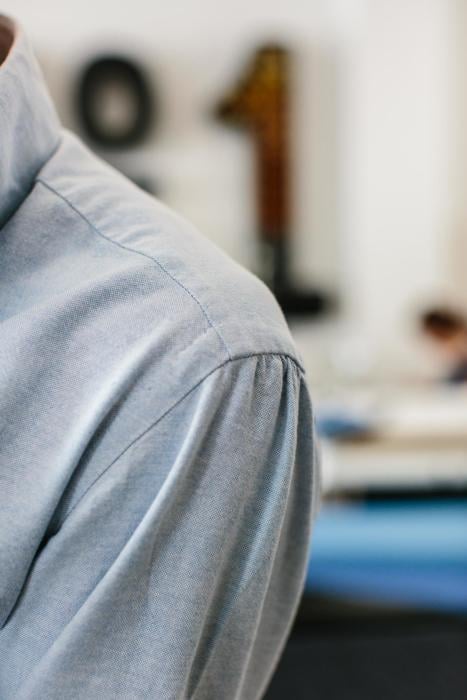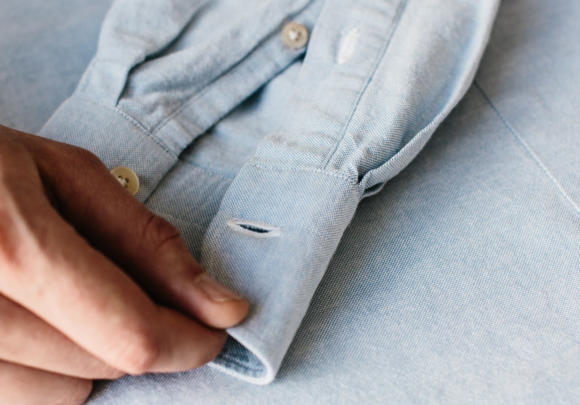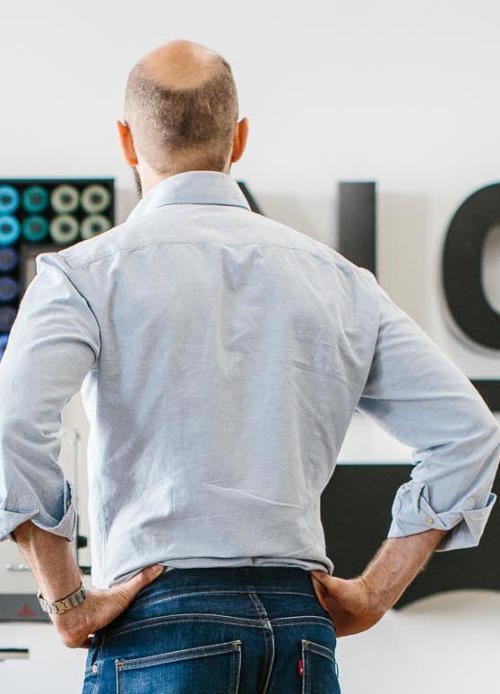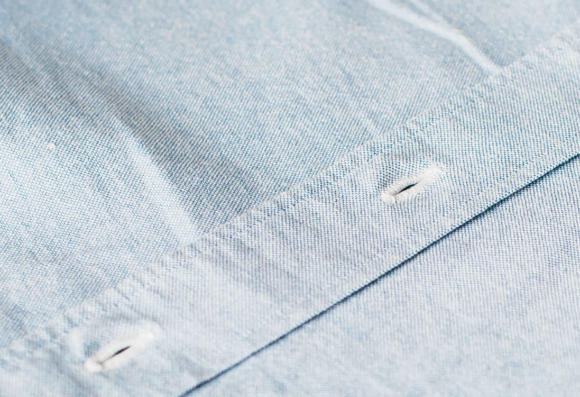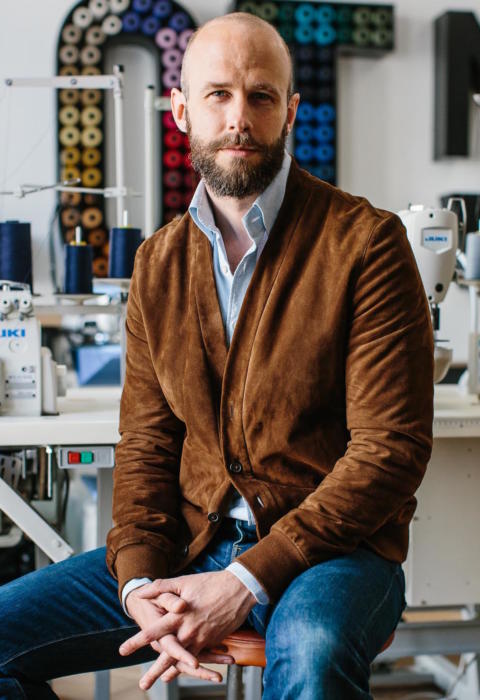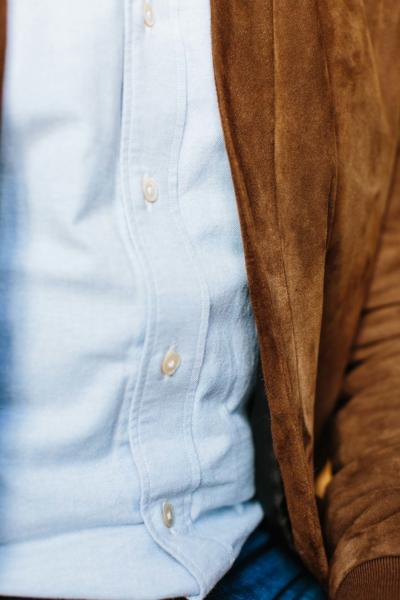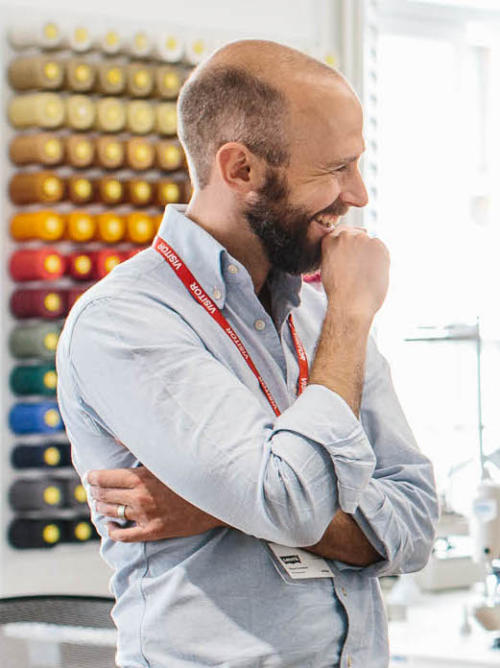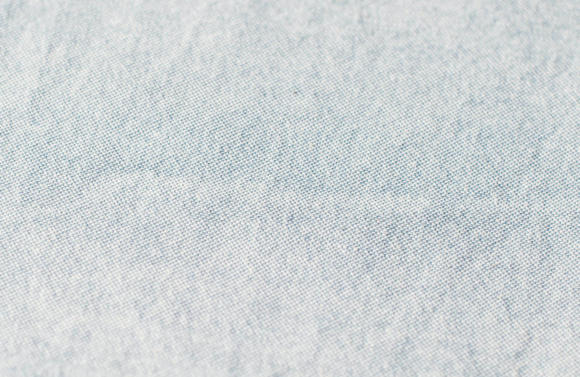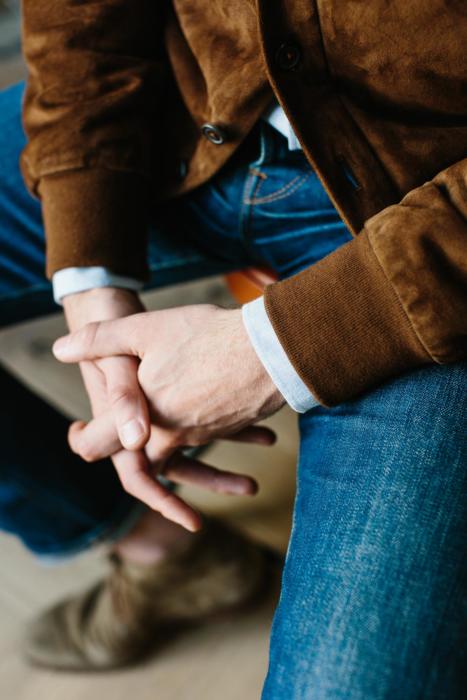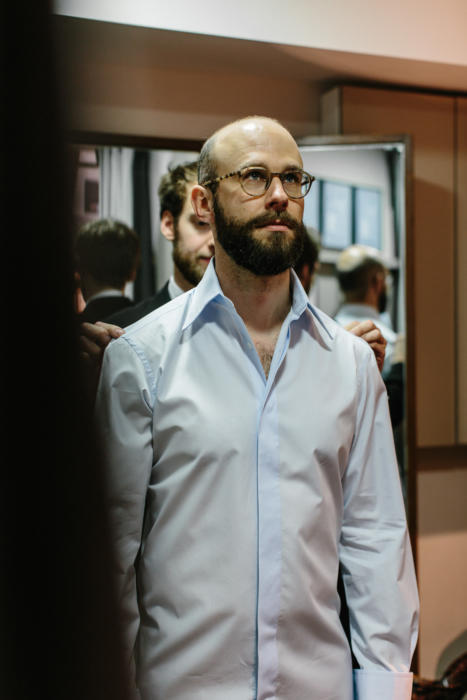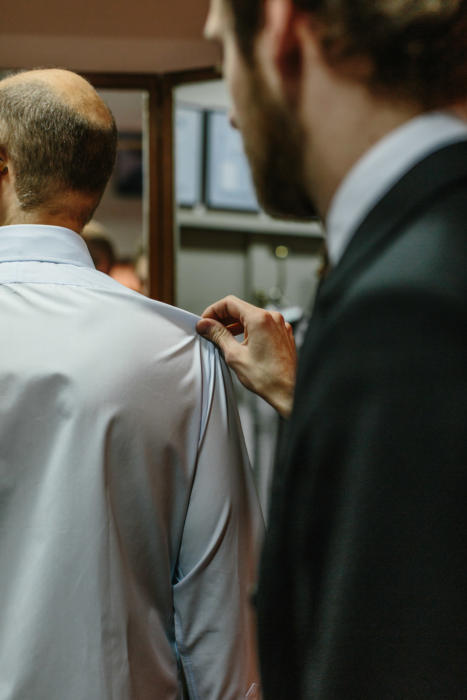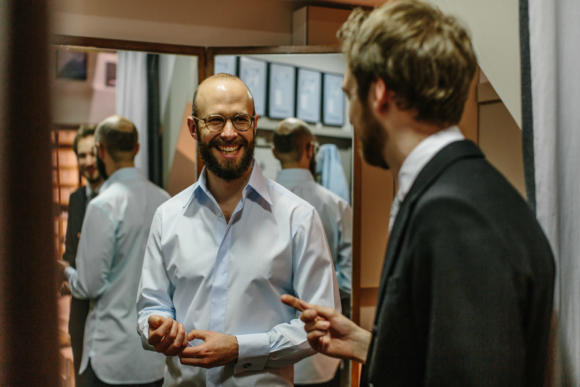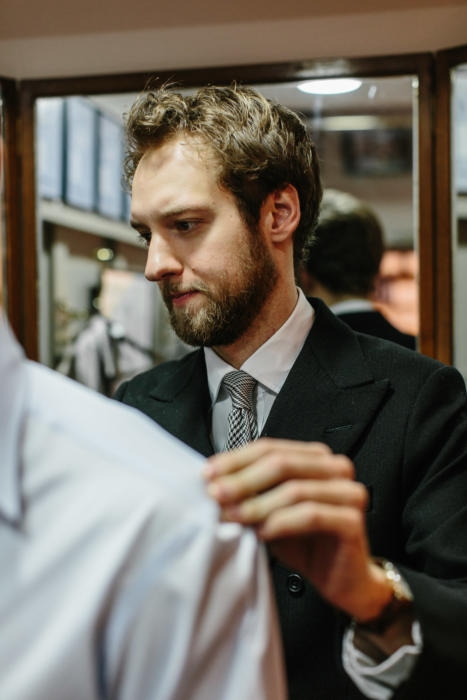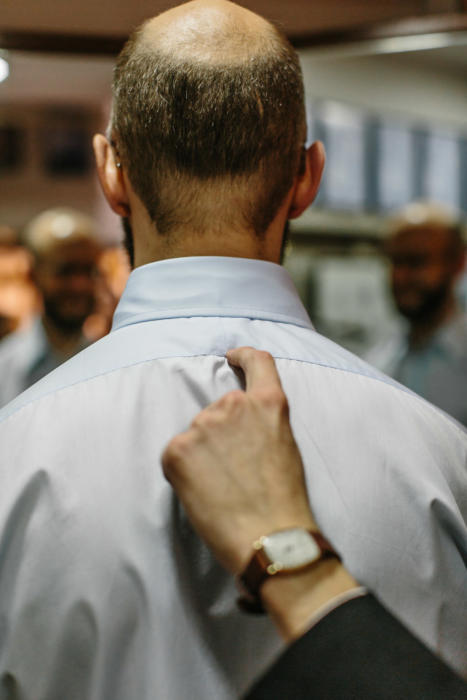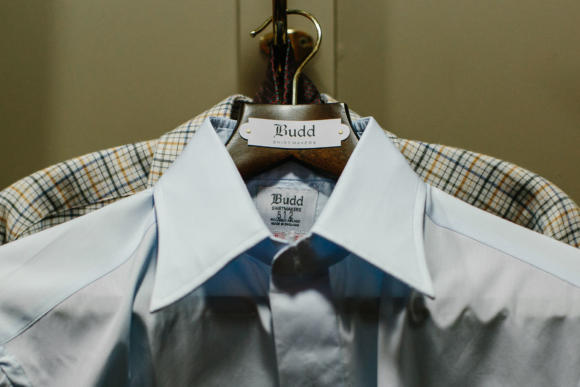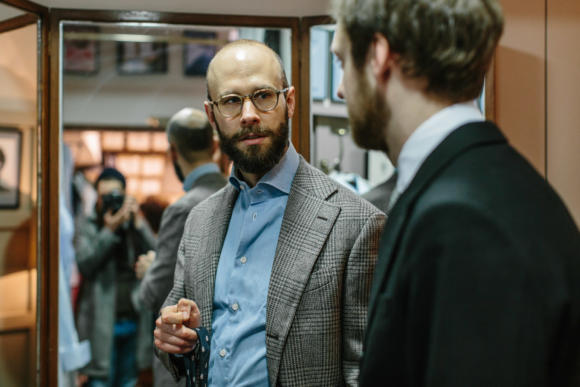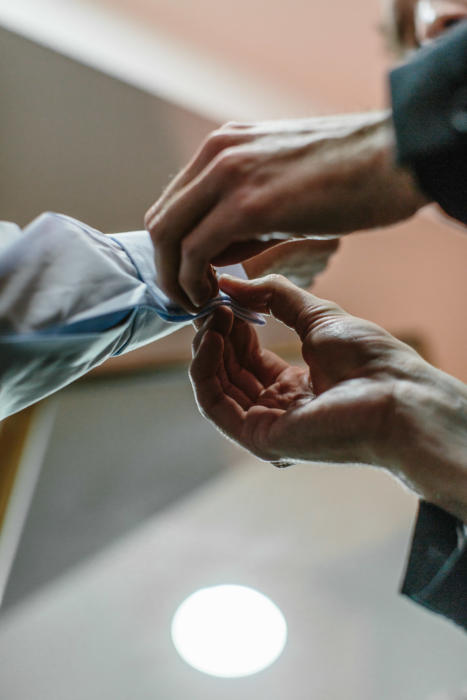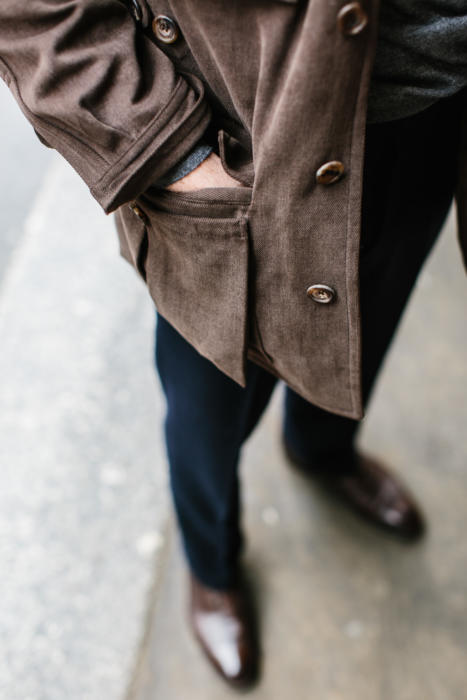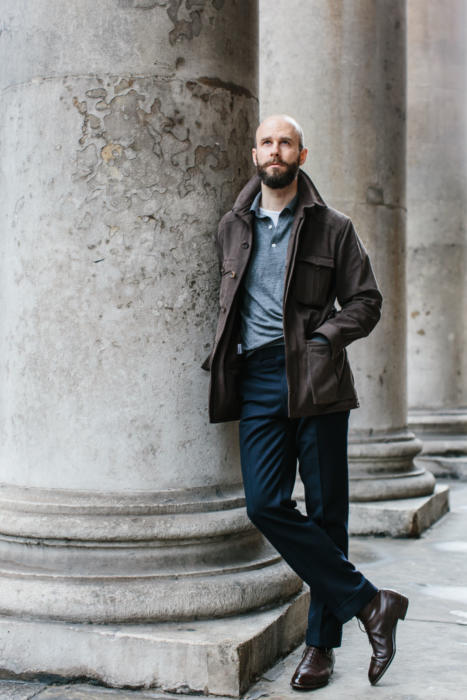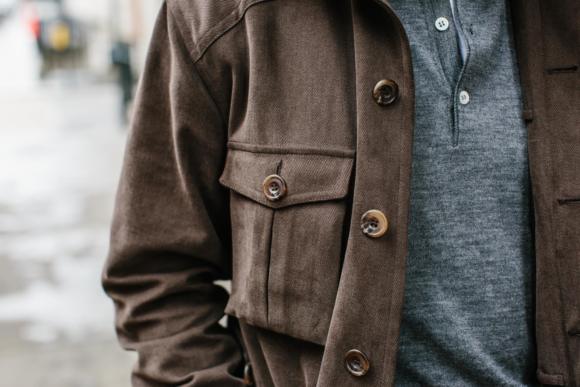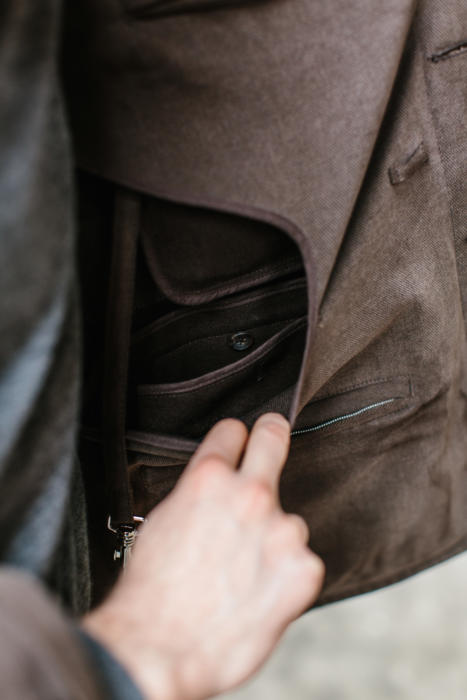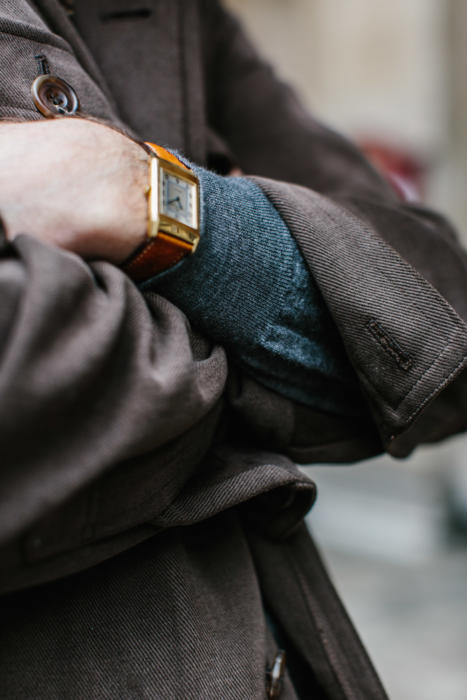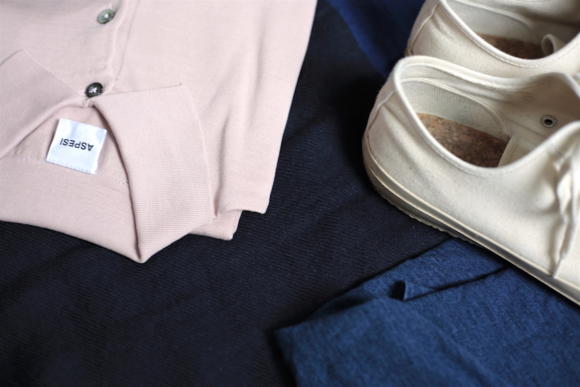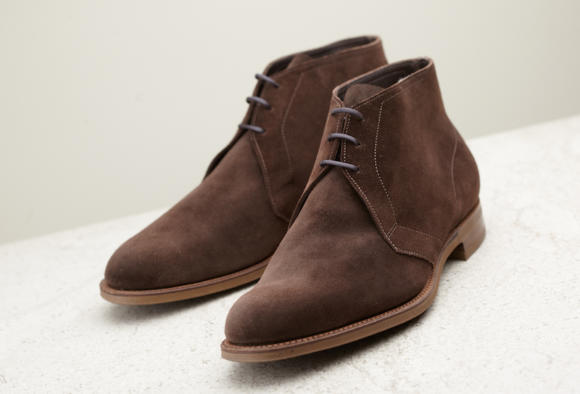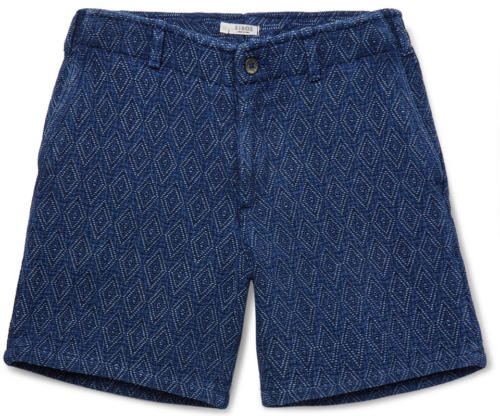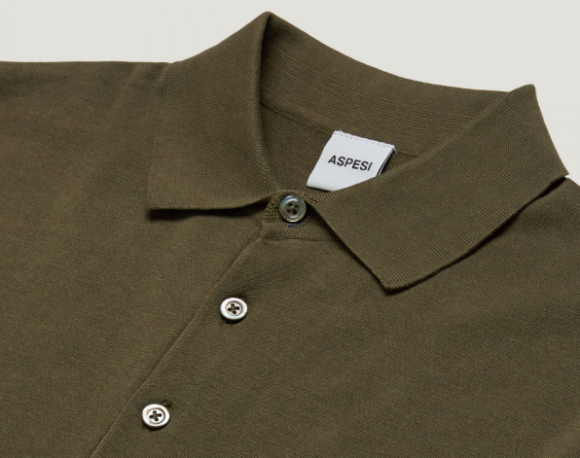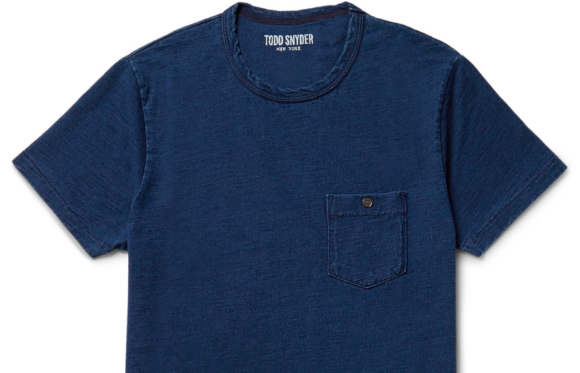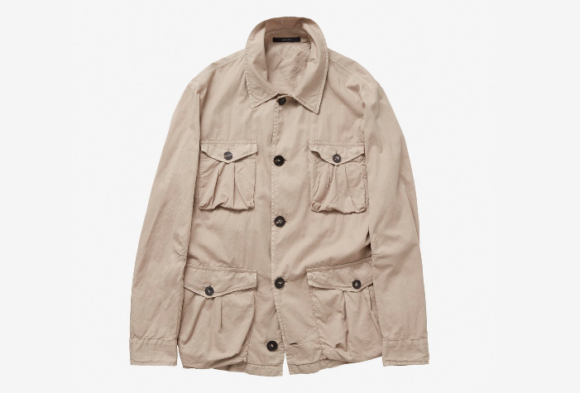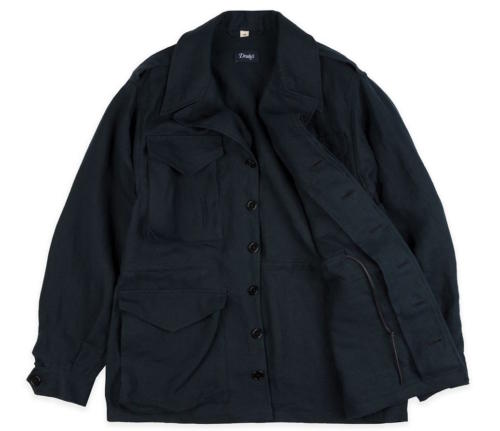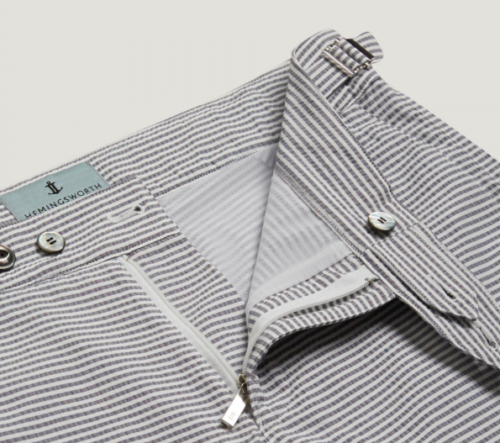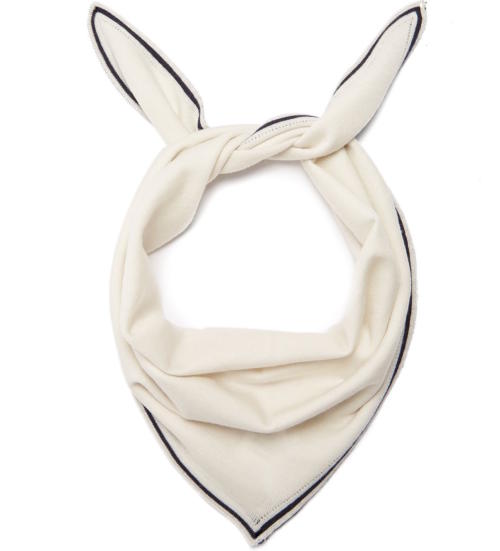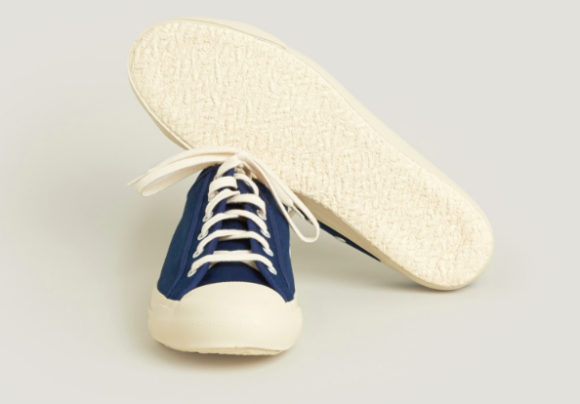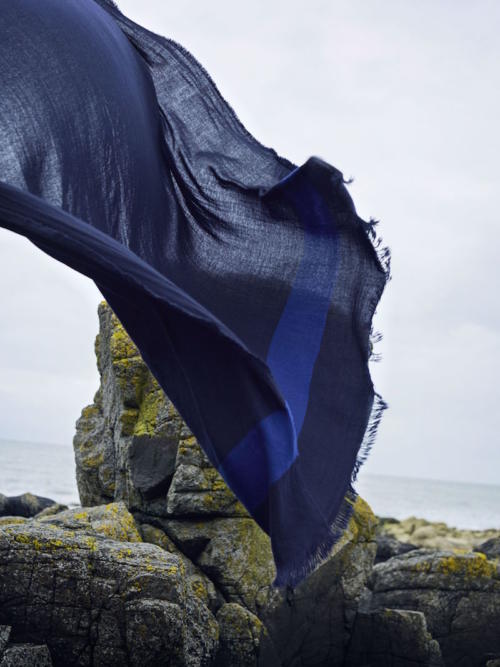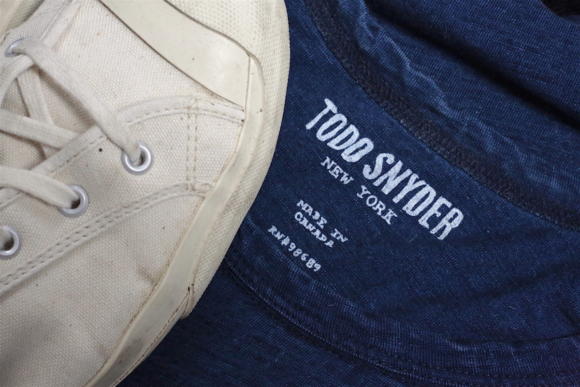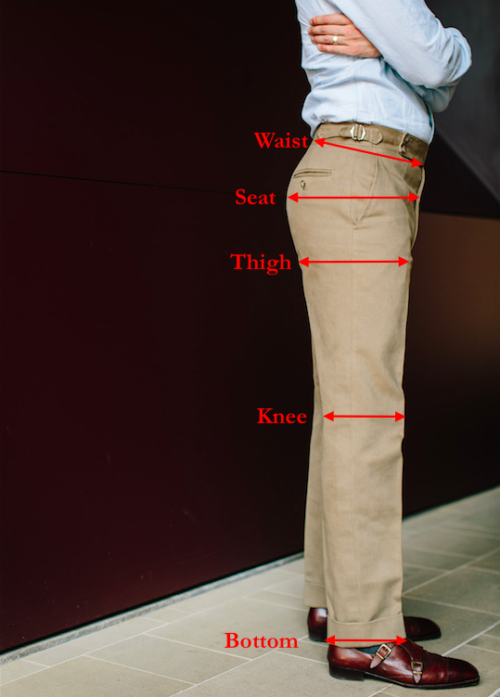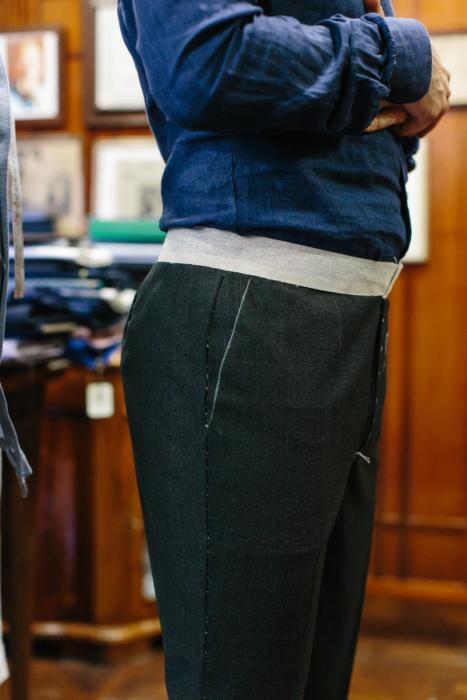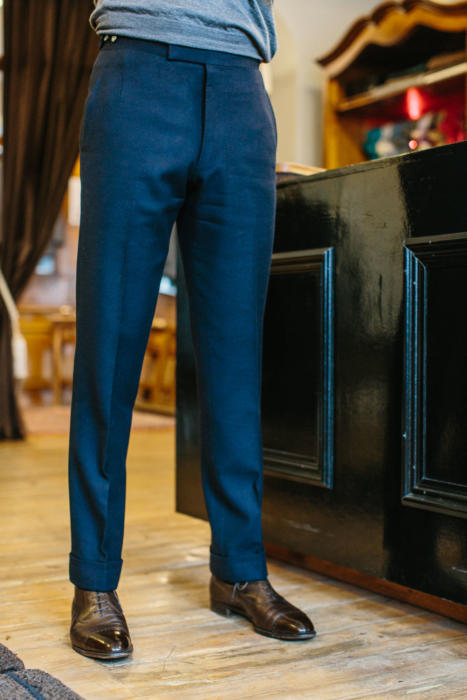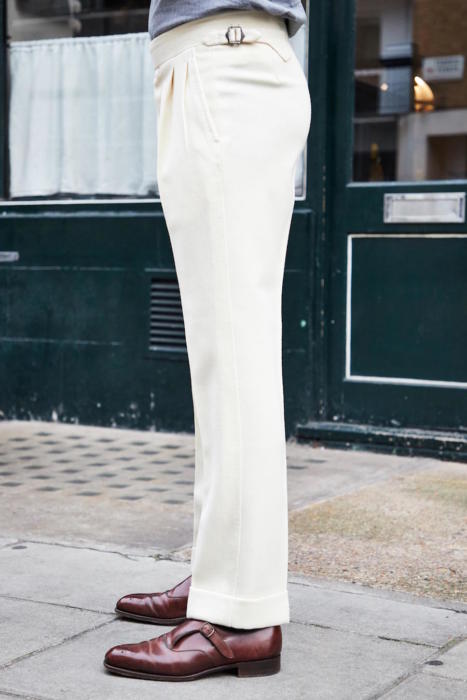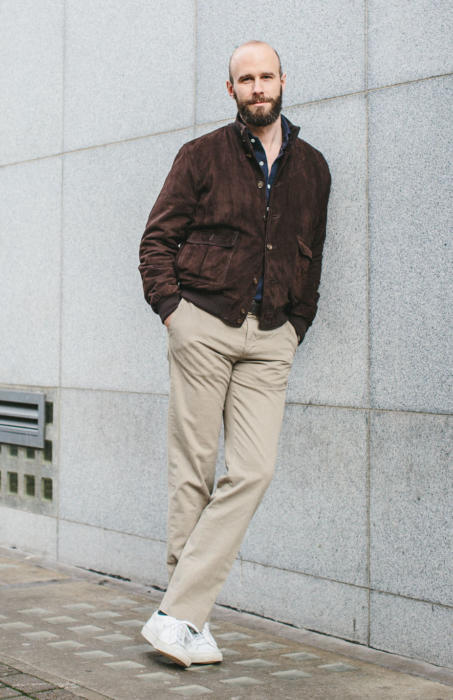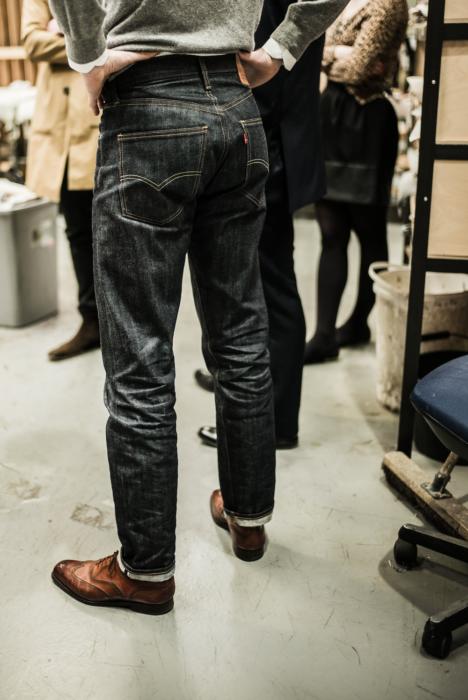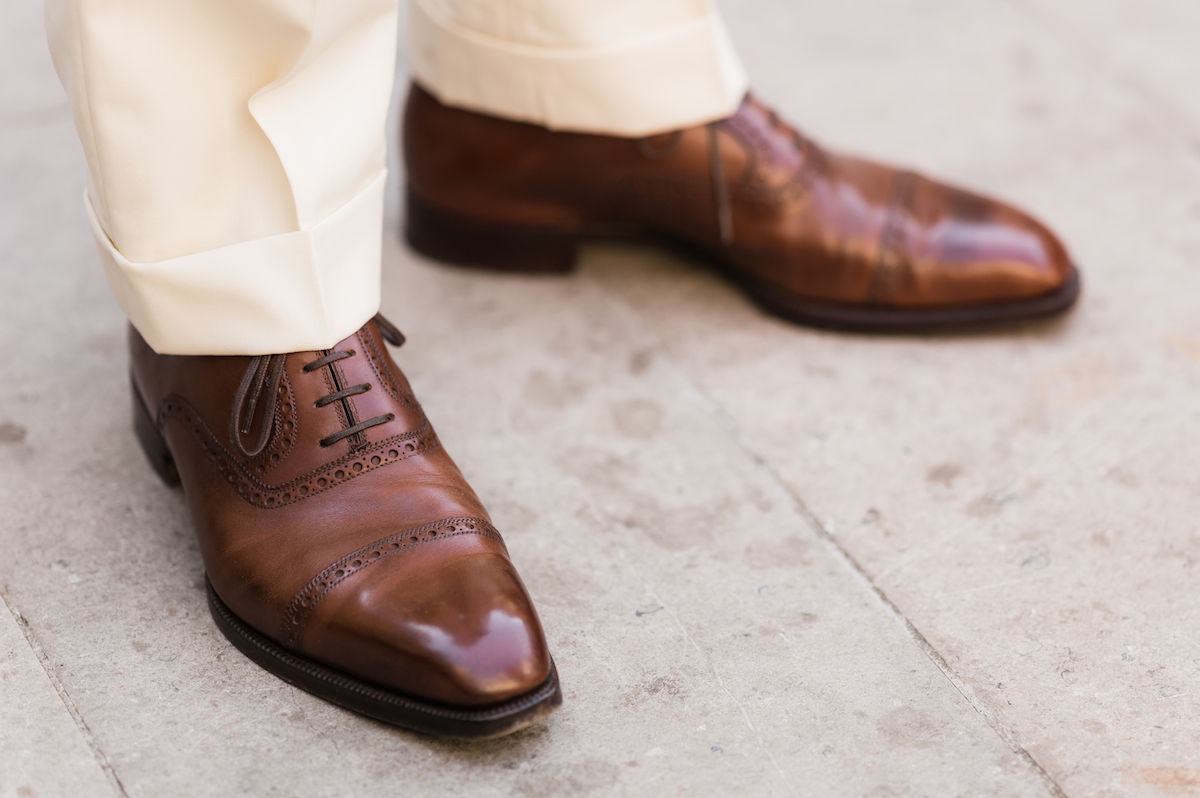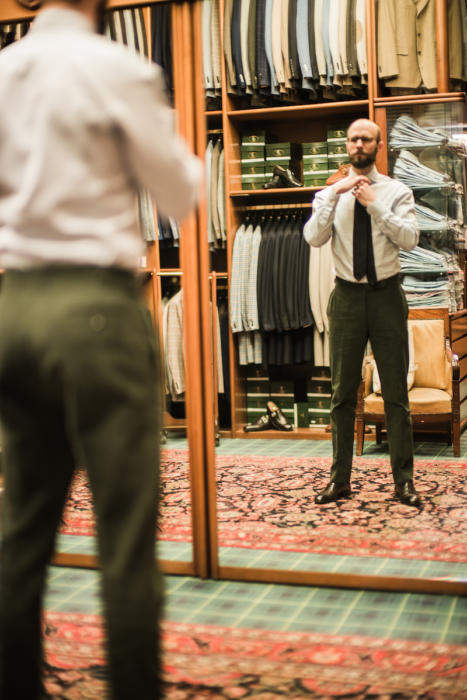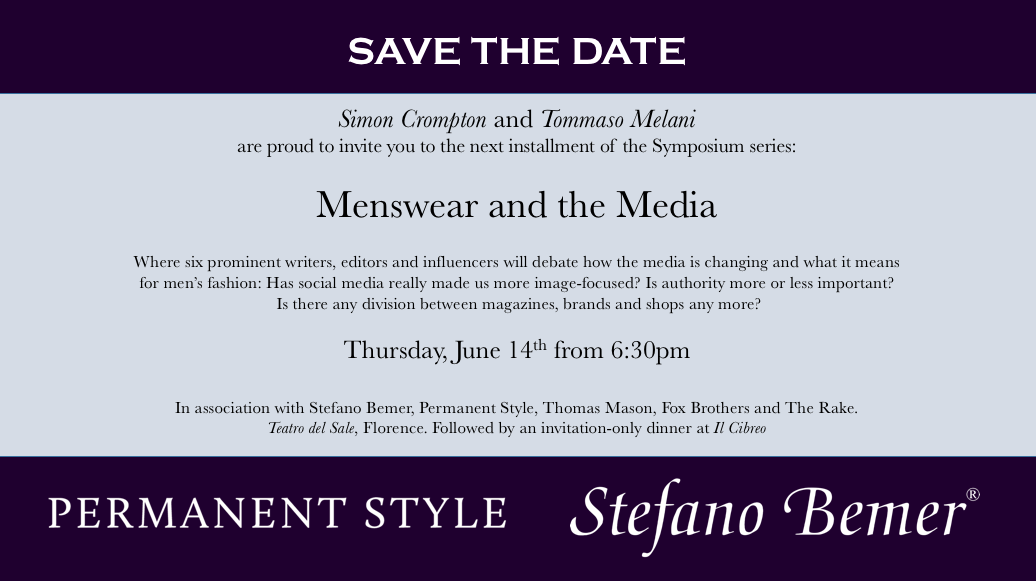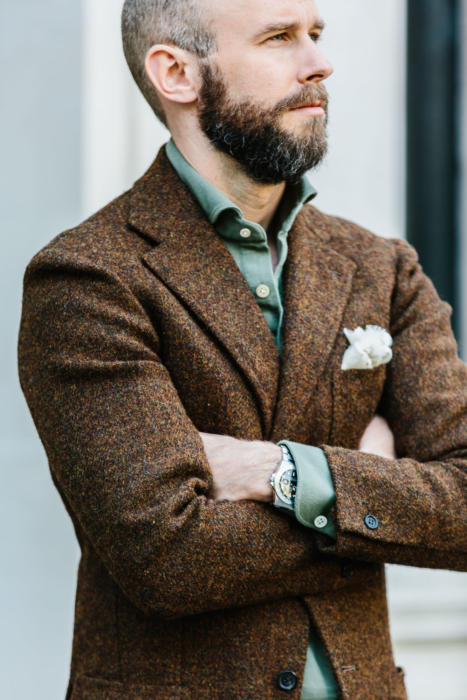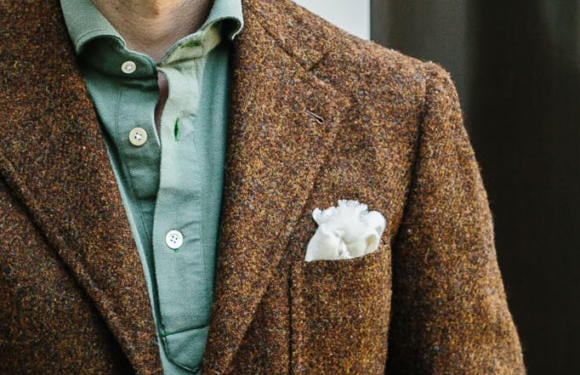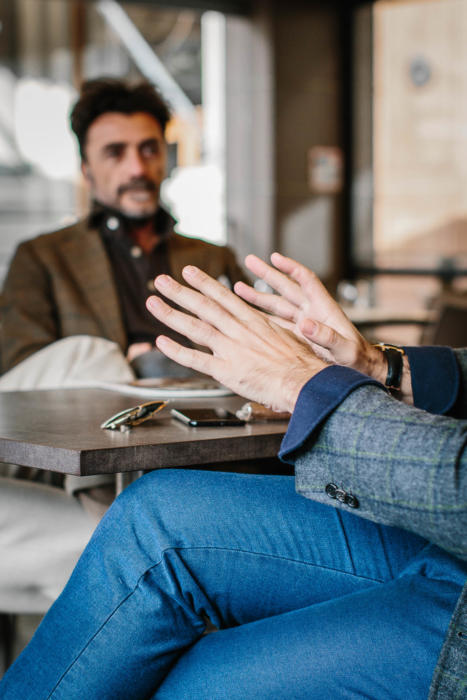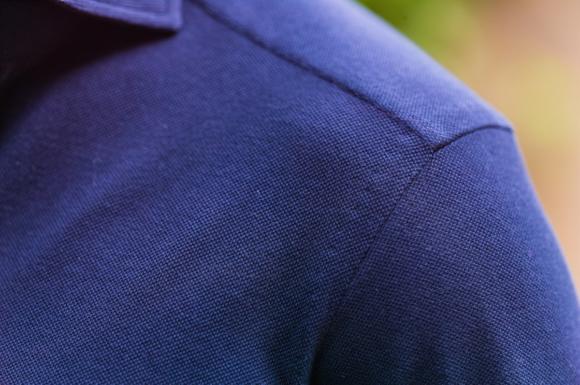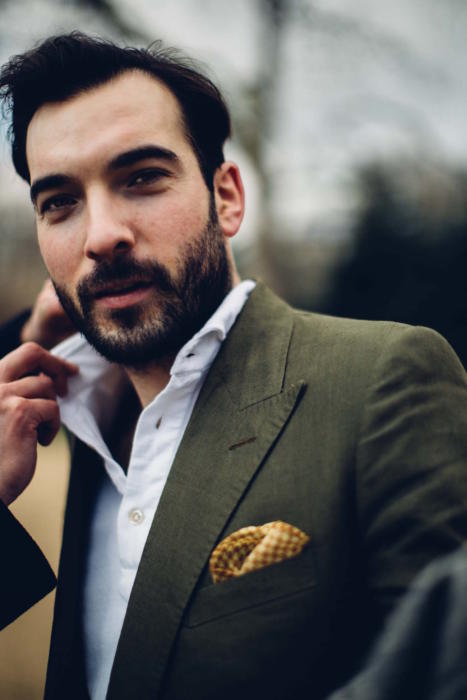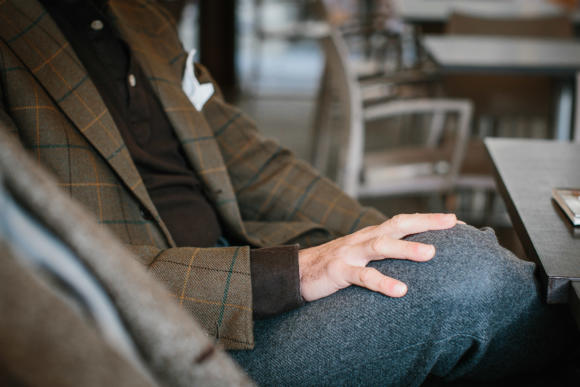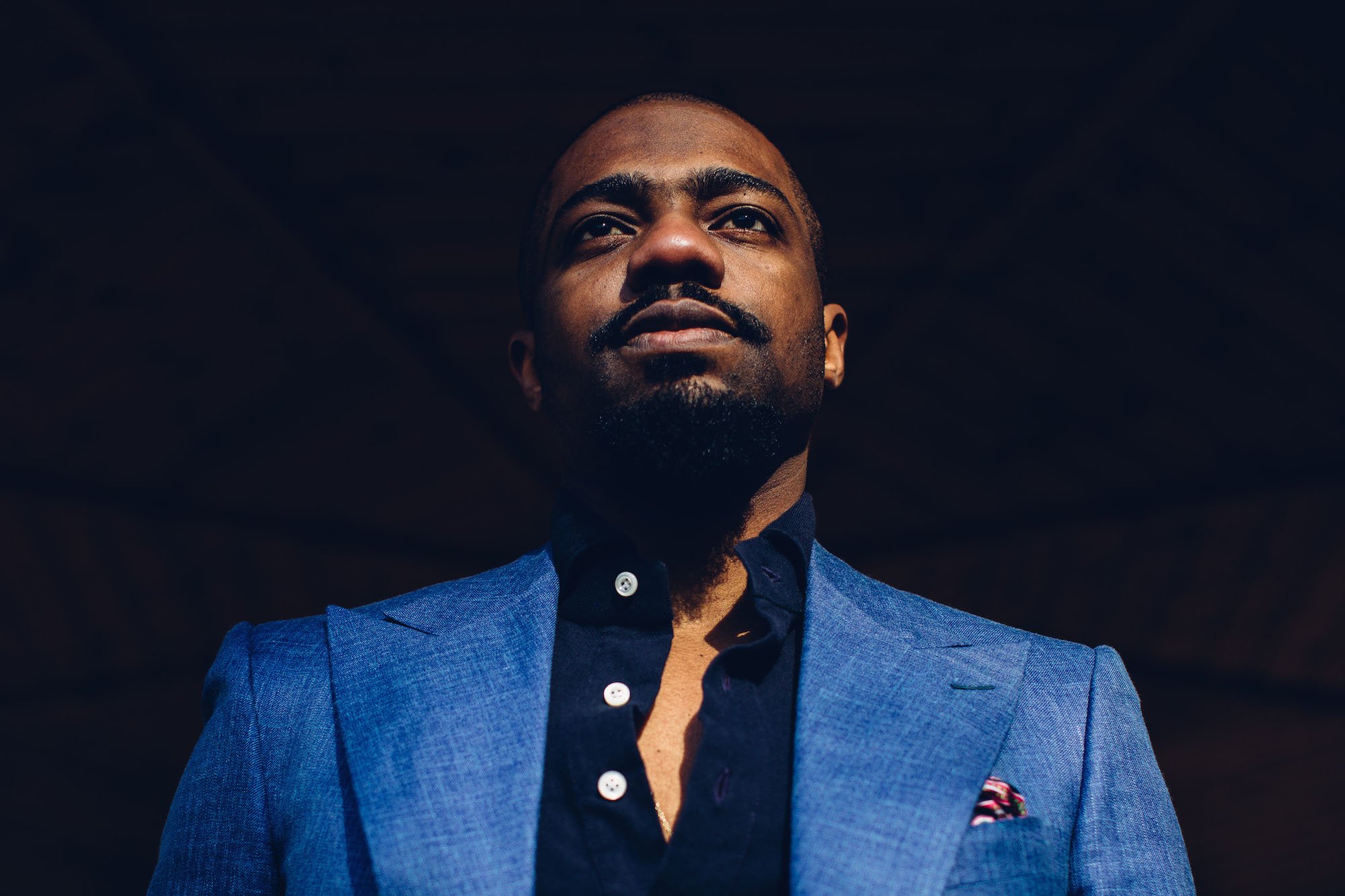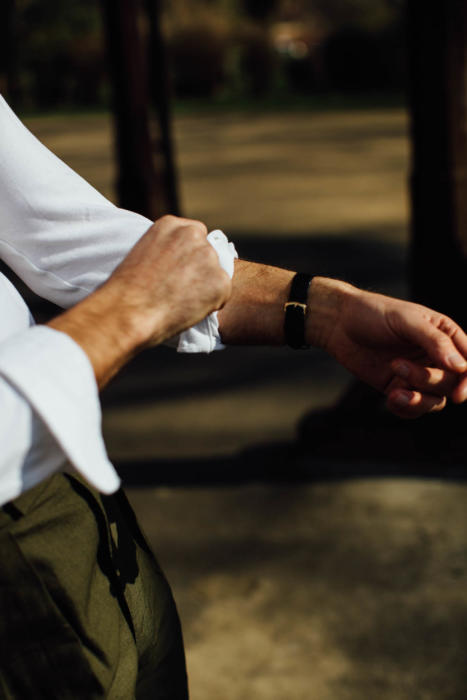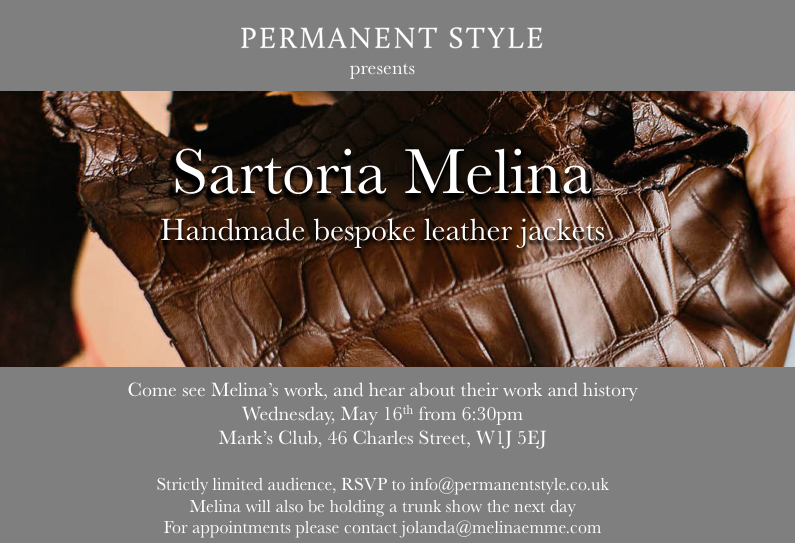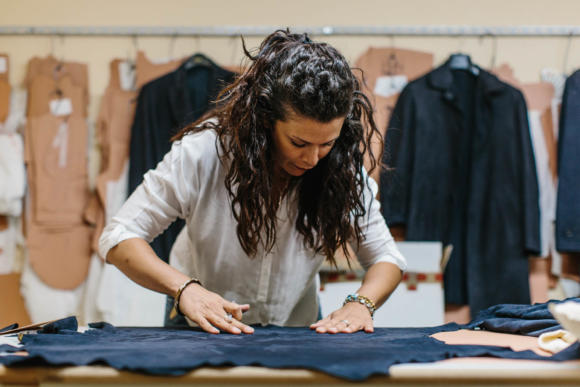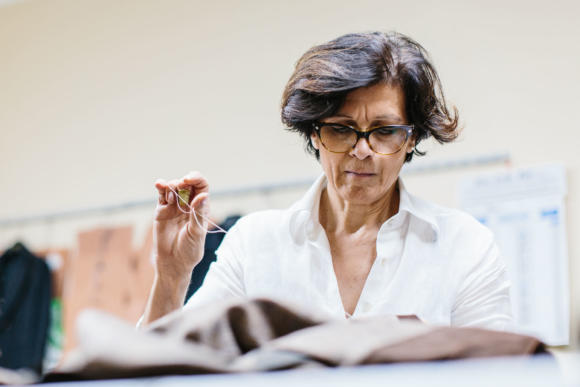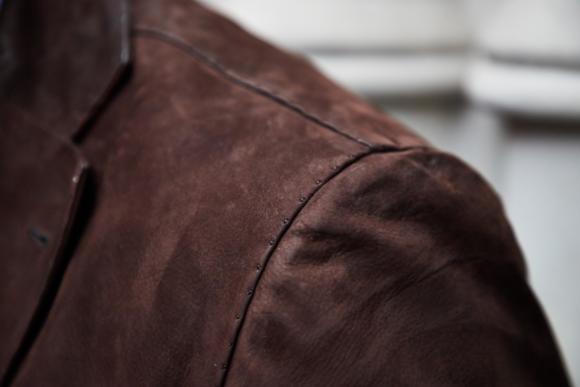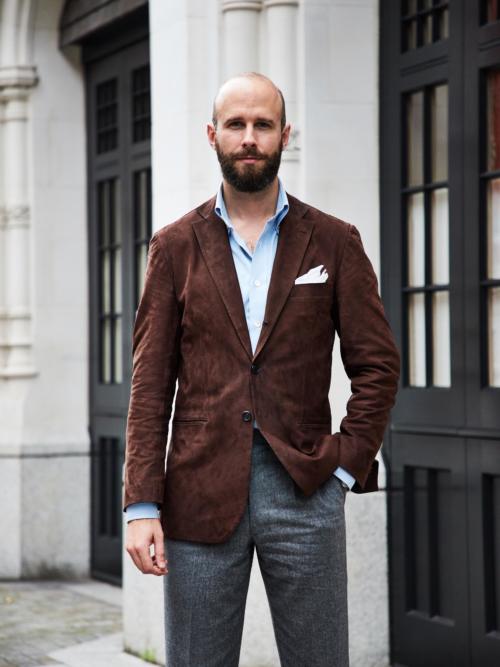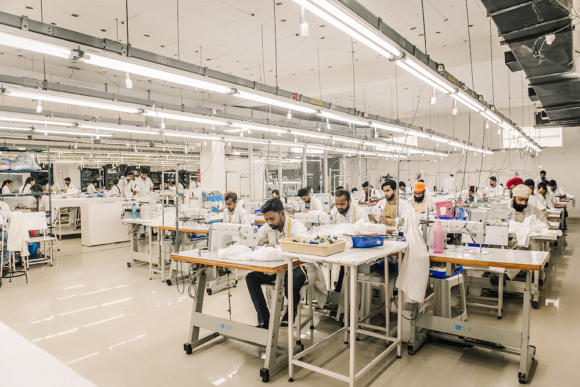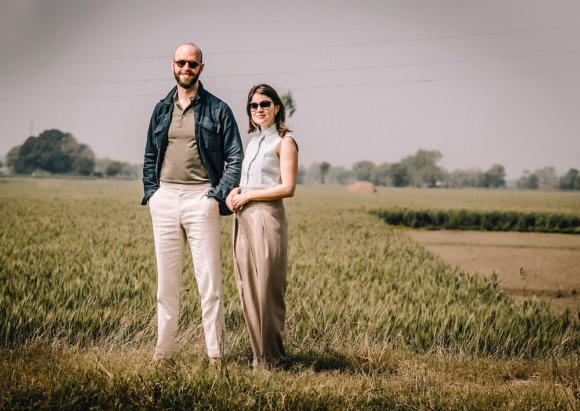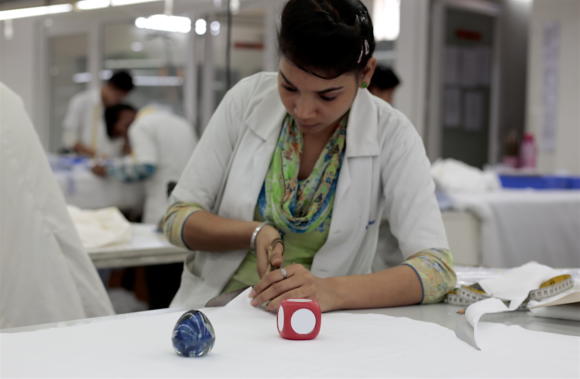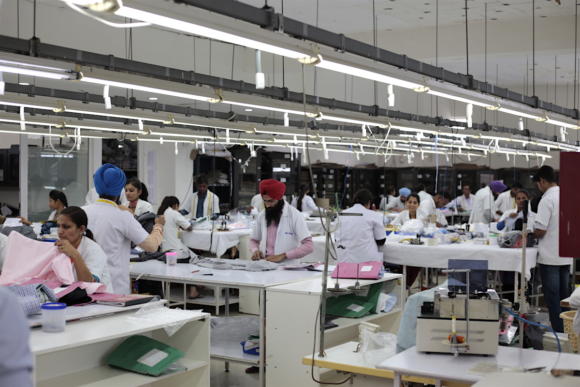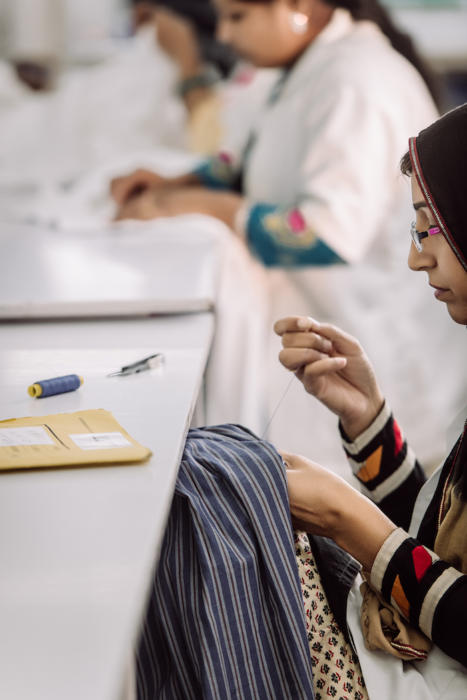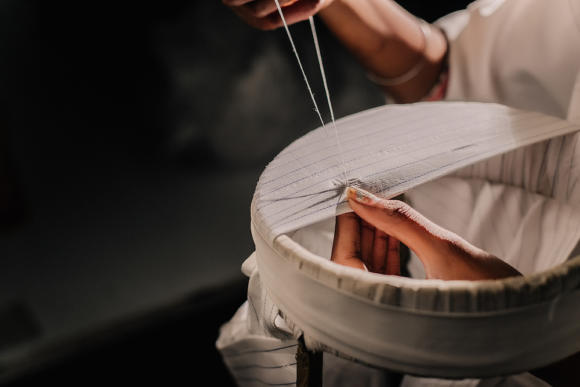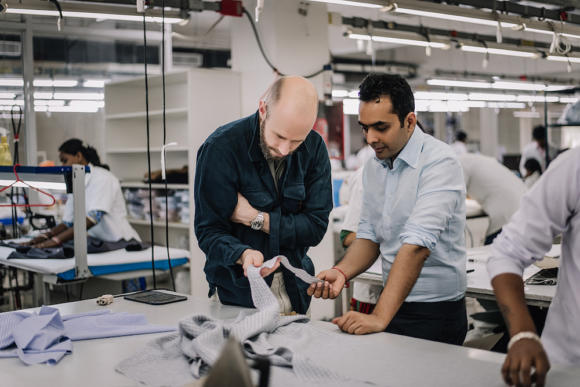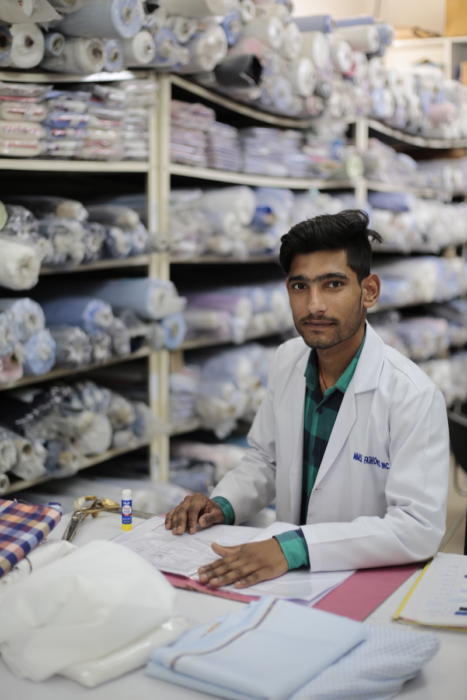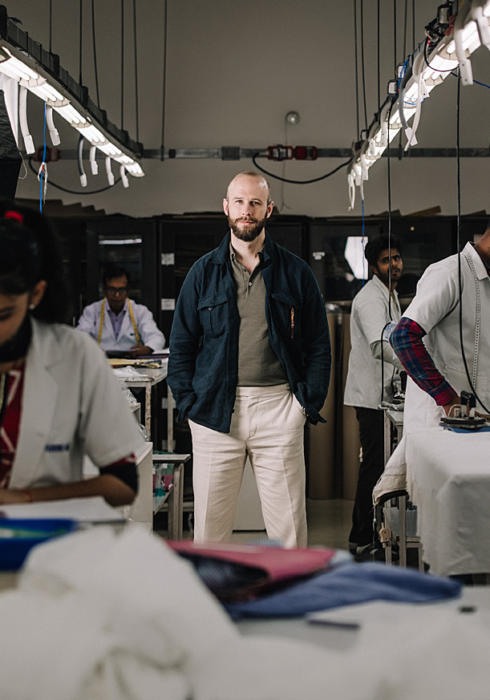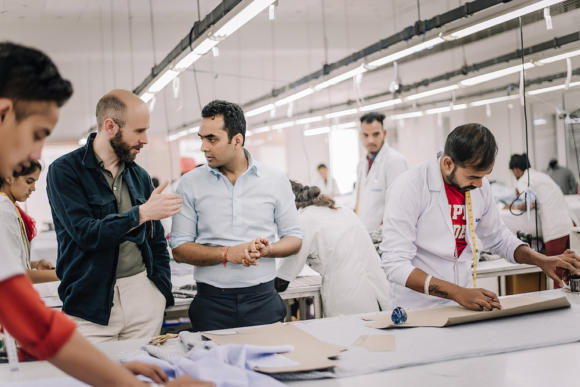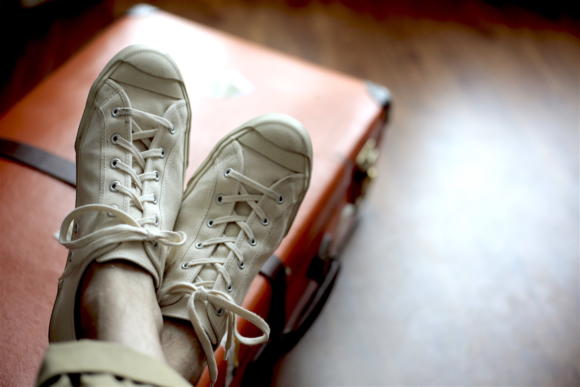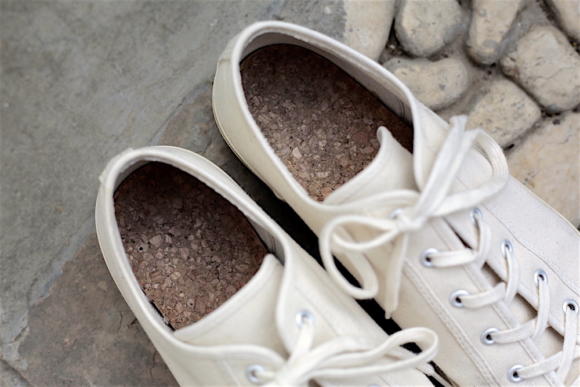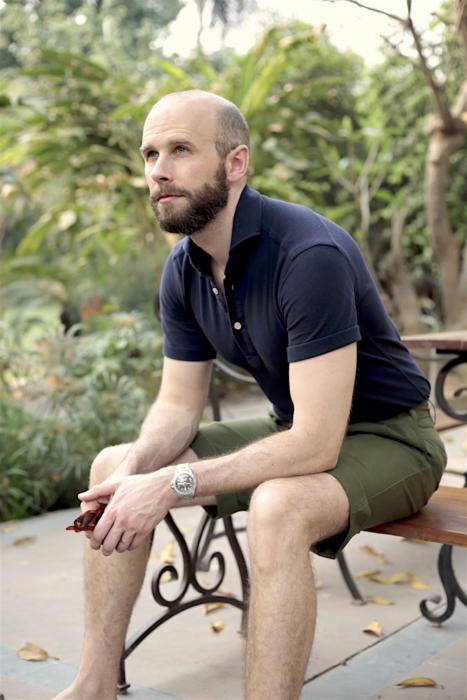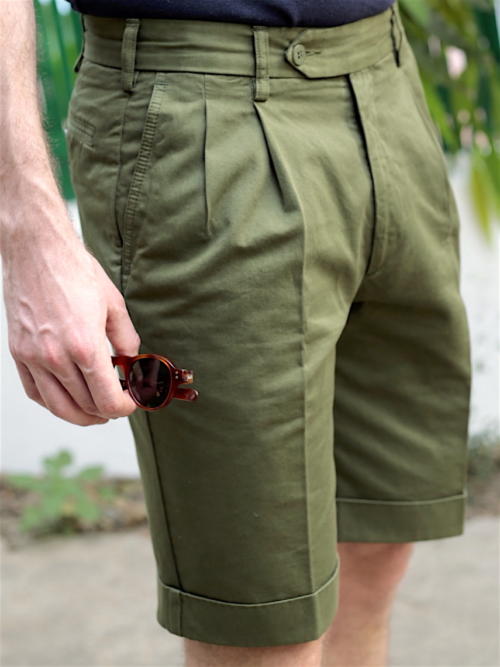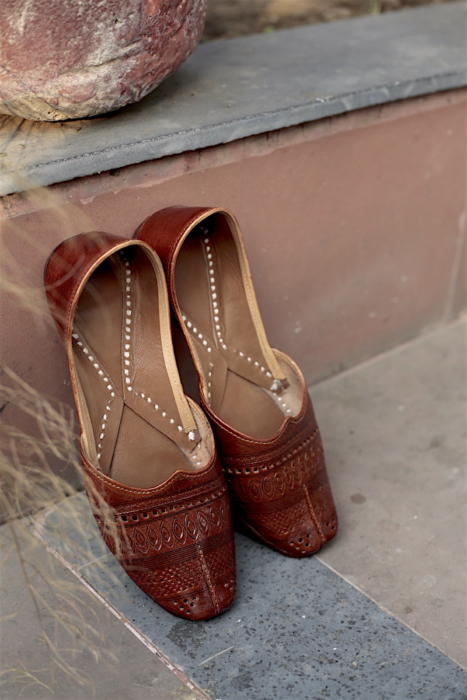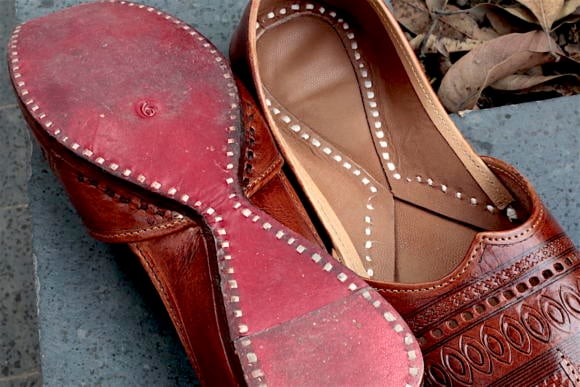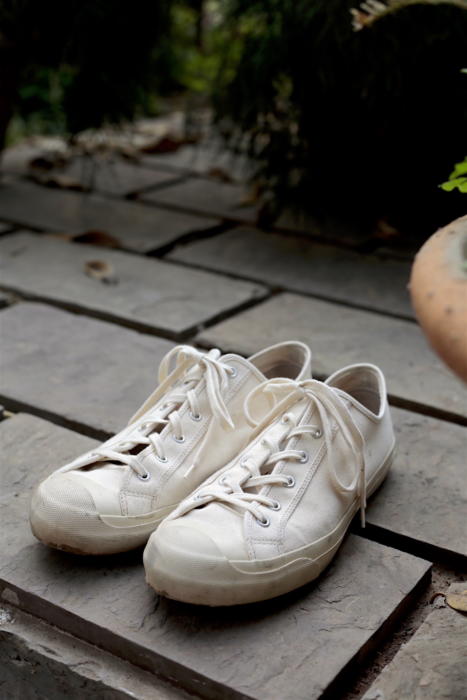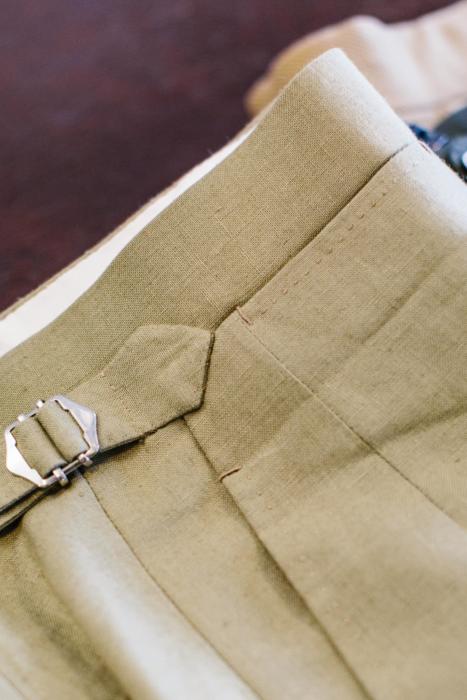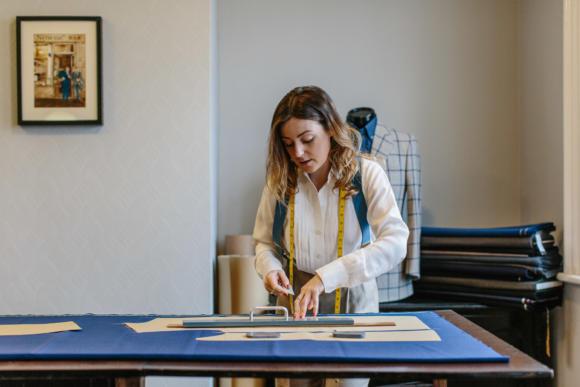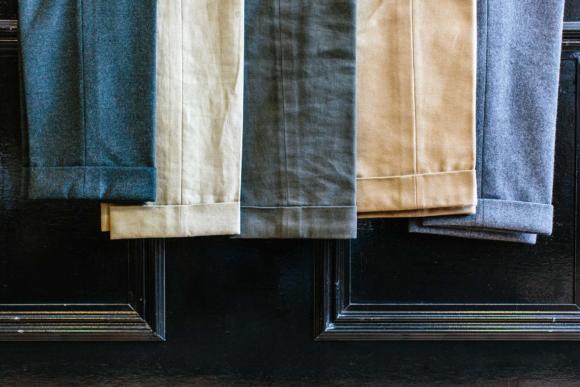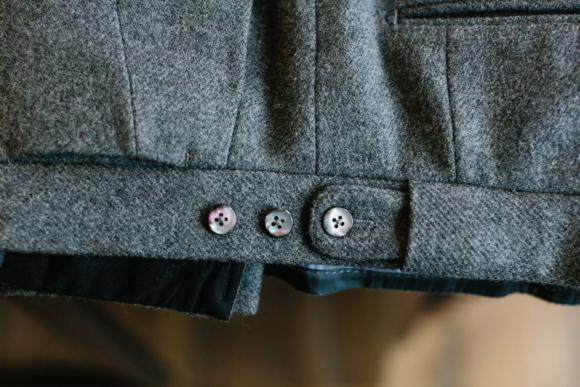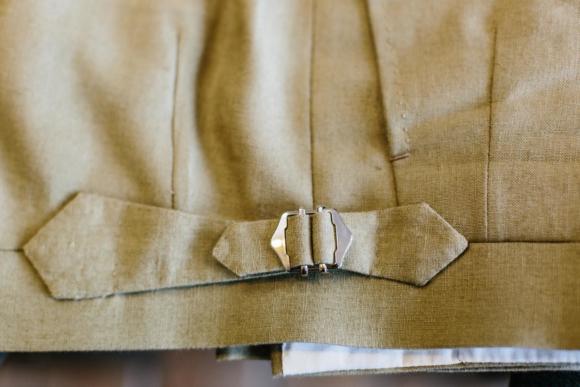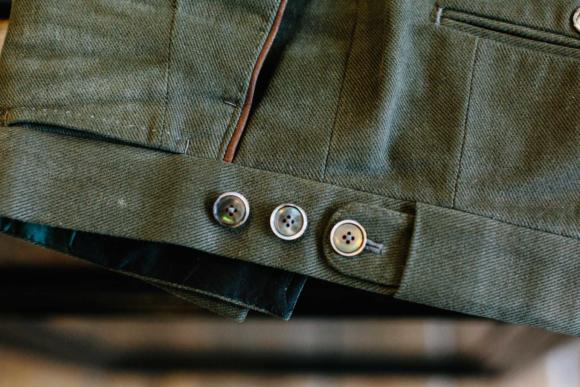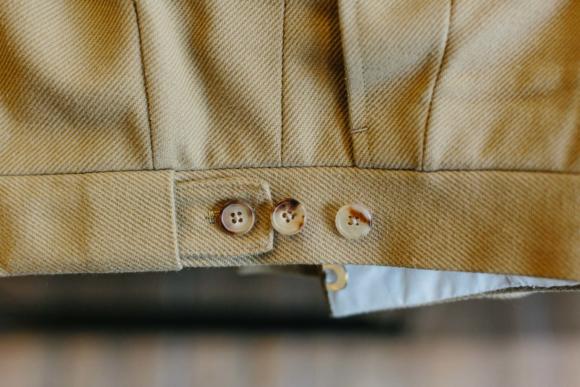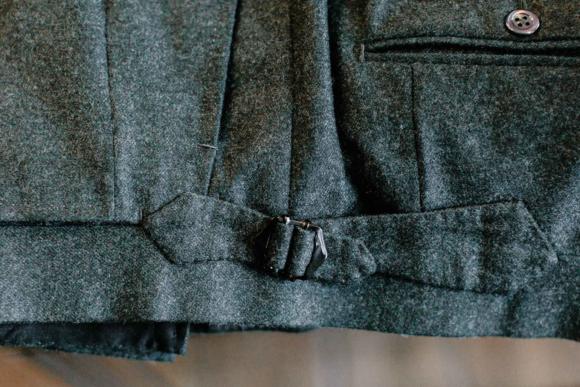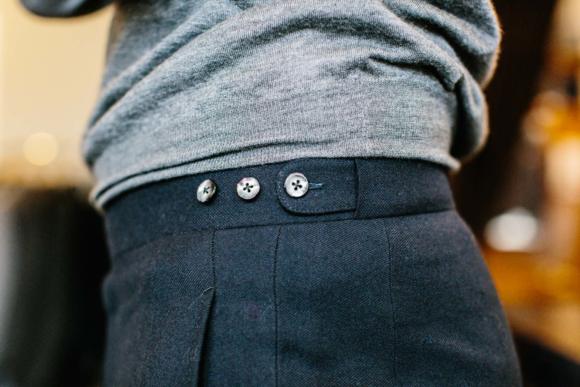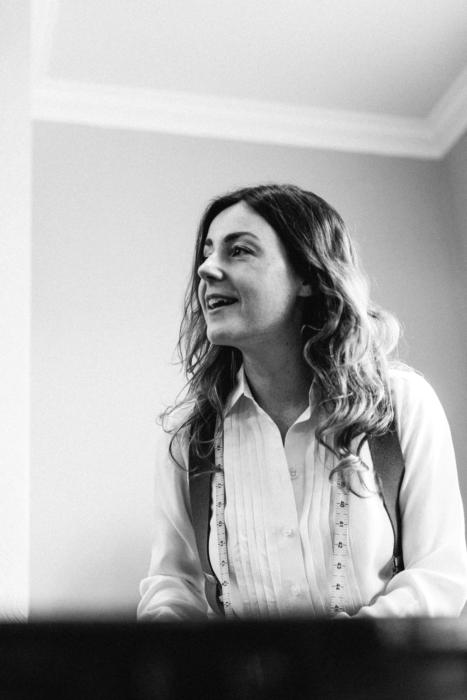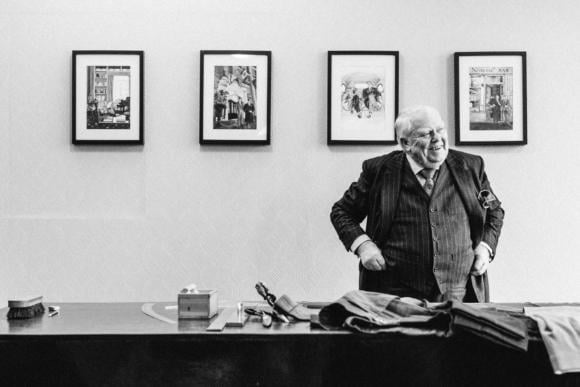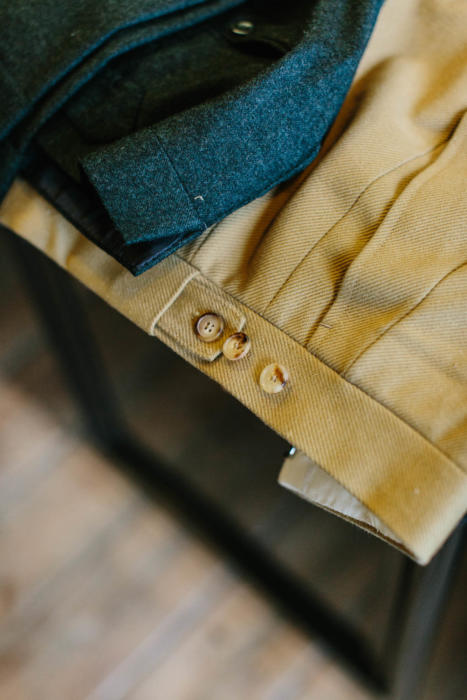A nice thing about our Finest Tailors series is that, as we add more tailors to it, each becomes a reference for the next, making comparisons easier.
This Henry Poole suit, then, makes an interesting comparison to the Richard Anderson tuxedo we featured first.
Both are traditional Savile Row tailors, both are known for relatively straight, structured styles, and yet there are significant differences in the details.
[For background on the Finest Tailors series, and an explanation of some technical points used, see the introduction here.]
House: Henry Poole
Address: 15 Savile Row, London
Site: henrypoole.com
Cutter: Craig Featherstone
Price (at time of writing): £4810 (incl VAT; same as suit starting price)
Craig Featherstone cut me this double-breasted suit in 2011. We ran a nine-part series on the process, in fact, including coverage of the measuring, fitting, trouser making and coatmaking.
The cloth is a 10oz wool by Fox Brothers, woven exclusively for Henry Poole as its ‘Seafield check’ – referencing the first estate to adopt the pattern we now usually refer to as a glen check, and for whom Poole historically made for. It is distinctive for its fine burgundy overcheck.
I’ve been very pleased with the suit over the years, although the relative dandiness of the check, and the double-breasted style, have limited its use. A single-breasted would have been easier to combine with conservative accessories, and wear to the office.
I’m also still not sure on the four-button style.
I had seen it on a friend and thought it was a nice, subtle alternative to the normal 6×2 (six buttons, two of them fastening). And it was cut exactly the same as a 6×2, just with the top two buttons removed – so I could add those two buttons whenever I wanted.
Somehow over the years, however, I have remained slightly unsure of it and also not added those buttons.
It doesn’t help that I’m also still not quite sure on the grey horn they are made of.
This was intended to make it easier to wear the suit with both black shoes and brown, but they lack the texture of the brown horn I love so much.
Considering the suit afresh now, I might swap the grey for a nice variegated mid-brown horn, and then re-assess the top two buttons.
In terms of style, the suit is made in a very similar way to that Richard Anderson tux. But the cut gives it considerably more shape.
So there is a light shoulder pad (by English standards), a standard three-part canvas, and a little drape in the chest.
The shoulder of the Poole suit is cut rather wider, however: 6⅞ inches from the back neck, rather than 6.
This extended shoulder runs slightly beyond the natural end of my shoulder, and is accentuated by the use of a sleevehead roll to give a slightly roped effect at the top of the sleeve.
There is also more shape to the waist of the jacket – something particularly evident in the side-on view, below. You can see here how the jacket follows the shape of my lower back, curving inwards before running out over the seat.
The hips are also cut a little fuller, and the vents higher (10½ inches).
All this increases the effect of the ‘X’ shape that we talked about last time – the top and the bottom of that X are wider, and the middle narrower.
The position of the buttoning point also makes a difference. Although it is the same height here (20 inches) as the tuxedo, the jacket is a touch shorter (32 inches rather than 32¼), which means relatively, the buttoning is lower.
The bottom of the ‘X’ is shorter, making the top seem bigger.
Of course, given this is a double-breasted jacket rather than a single, we cannot compare the opening of the quarters. And the longer, diagonal lapel of a double-breasted jacket adds visually to the effect.
But the rest of the cut – the most significant points – can be directly compared, and the flattering nature of those larger shoulders and close waist is clear.
The DB lapels, by the way, are pretty modest. They are 3⅞ inches wide, and seem narrower given the breadth of the shoulders.
They have a little belly at the bottom, but otherwise run up pretty straight to the shoulder. (A little belly is much more common on double-breasted lapels than single.)
It would be interesting to see the effect that wider, Italian or Milanese-style lapels would have on a cut like this.
(You can see a comparison of those DB styles in a previous post, here.)
The sleeve is pretty standard, tailored subtly and finishing in an 11⅜-inch cuff.
The jacket is made with a side body (a panel down the side of the jacket), unlike the tux but more standard for Savile Row.
Interestingly, the work inside is perhaps the least of the Row suits in this series.
In the original posts I noted that the collar was padded by machine, and the lining is machined to the facing of the jacket inside, where others do it by hand.
This is also one of the few suits with the in-breast pockets cut straight into the lining, rather than being supported by cloth running around them (shown below). Although a small point, this does mean they’re not quite as strong in the long term.
In the images, by the way, I think I have hiked up the trousers a little too far to try and show their lines. In reality they drop a little lower, just sitting on top of the shoes.
The accessories here are from the Anderson & Sheppard Haberdashery, and the shoes from Edward Green. I should have mentioned previously that they are sponsoring this series and therefore are providing these pieces throughout.
The Edward Green shoes are Berkeleys in black calf.
Next up will be Anderson & Sheppard. And there the proportions get wider again.
Style breakdown
- Shoulder width: 6⅞ inches
- Shoulder padding: Moderate
- Sleevehead: Slight roping, pre-made sleevehead roll
- Sleeve: Moderate, standard cuff
- Lapel: 3⅞ inches (double breasted), slight belly but pretty straight
- Gorge height: 3½ inches
- Drape: Small
- Outbreast pocket height: 10 inches (shoulder seam to bottom of pocket welt)
- Buttoning point: Low, 20 inches from neck point
- Waist suppression: Slim
- Quarters: No opening (double breasted)
- Length: 32 inches
- Back seam: Suppressed
- Vent height: 10 ½ inches
- Trouser width at knee: 20½ inches
- Trouser width at cuff: 17 inches
Photography: Jamie Ferguson @jkf_man


